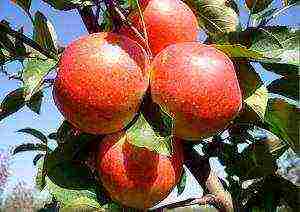Content
- 0.1 Sun Valley Wines
- 0.2 Wines of the New World
- 0.3 Wines of Massandra
- 0.4 Magarach
- 0.5 Inkerman Vintage Wine Factory
- 0.6 Factory of vintage wines and cognacs "Koktebel"
- 1 Vinland by the Black Sea
- 2 Extracts from the history of the art of winemaking
- 3 Wine factory "Massandra"
- 4 "Bastard" of French winemaking
- 5 Such a wonderful "Koktebel"
- 6 An alcohol worthy of the ancient masters
- 7 Other factories with a big name
- 8 Blending of varieties and the history of the formation of vineyards
- 9 The most common grape varieties
- 10 You should know their names
- 11 Taste palette and external characteristics
- 12 Geopolitics and the current position of enterprises
Going on vacation, we always want the best. This also applies to the choice of the place where we are going, and the hotel where we will live, events and attractions that we plan to visit, but especially, ways of relaxation. Pay close attention to drinks. In the south, you must afford a couple of glasses of red or white. They will help you relax and forget about problems. Indeed, in Crimea, alcohol is created according to recipes passed down from generation to generation. Many people wonder how to choose a quality wine from the huge variety found at every turn. Let's figure it out. In this article you will find a rating of the best Crimean wines with names and photos.
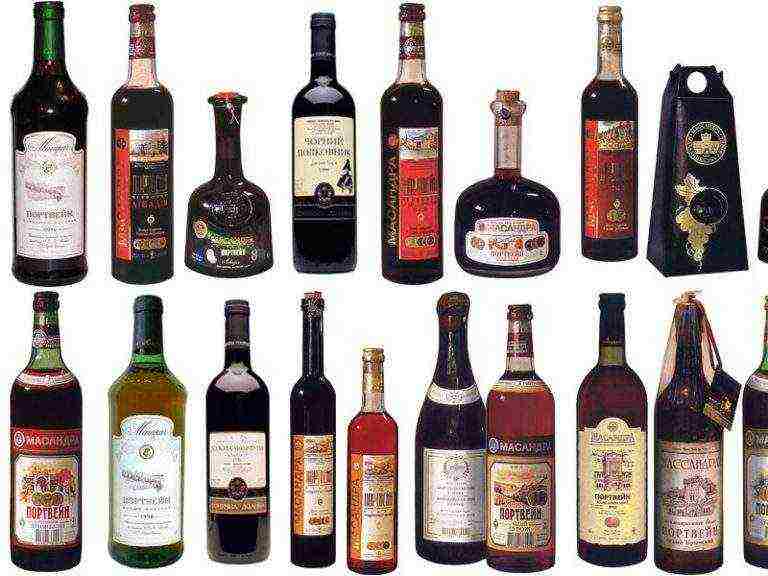
While on the peninsula, try to limit your under-the-counter wine purchases on the way to the beach and at the local market. Very often it ends with poisoning and spoiled rest. Choose vintage wines. You can find quality products at the famous factories of the Crimean Peninsula:
- "Sevastopol Sparkling Wine Factory" produces unique wines "Sevastopolskoye Sparkling", "Muscat Sparkling", which have no analogues. The products of this brand are highly regarded all over the world and have won many international awards.
- Massandra produces fortified sweet wines. They will not leave anyone indifferent with their aftertaste. From dry "Massandra" produces only canteens. You can go on an excursion where you will be taken to the collection wines aging workshop, to the cellar with the royal collection and the tasting room, where you can taste the best Crimean brands "Heres", "Kokur", "Muscat pink Massandra", "Bastardo", "Aligote ".
- "Magarach" - a collection of unique wines has been created at this plant since 1936. Currently, it contains 22 thousand bottles of more than 100 names, the most delicious of which are "Ruby Magarach", "Bastardo", "Pinot Gris Magarach".
- Novy Svet - produces the best wines - Chardonnay, Pinot Noir, Aligote, Cabernet Sauvignon.
- Koktebel is considered a country of cognacs, but it is also famous for its strong and dessert wines, the most popular of which are Pinot Gris and Old Nectar. The winery is highly noted at the most prestigious world exhibitions, the plant is considered a national treasure. Located in the town of Schebetovka in the southeast of the peninsula. Sightseeing tours of the plant are conducted.
- Inkerman is located near Sevastopol. There you can buy high-quality dry wine "Cabernet Kachinskoe", which is made in old vineyards in the Kachinsky valley. The cost of one bottle is 300 - 400 rubles. Also in the assortment of dry wines you can find slightly sweet "Merlot Kachinskoe", "Bastardo" costing around 300 rubles. A feature of Inkerman drinks is that they do not contain tannins, which impart a sour astringent taste. The best varieties of the Inkerman plant are almost all table wines.
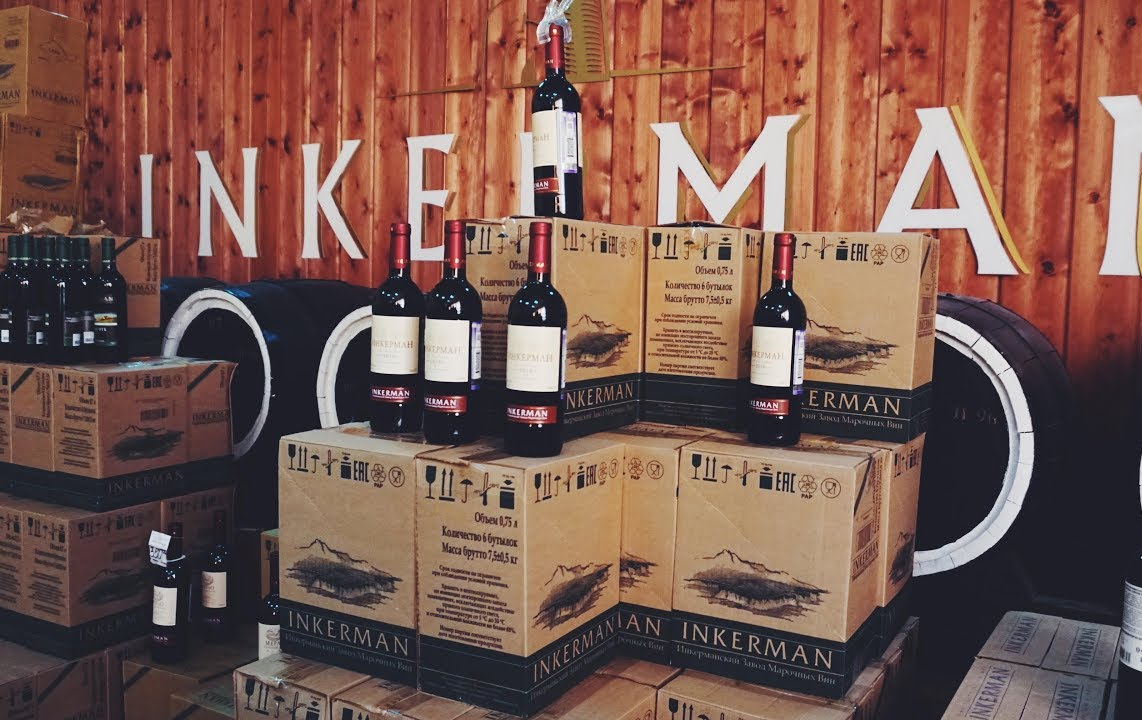
- "Zolotaya Balka" in the Balaklava region is famous for its vineyards and the value of the land on which they are located.That is why it is called "golden". This is the only largest winery in Crimea, which produces products under the brand of the same name from its own grapes.
- "Wine House Fotisal" is a modern factory in the southern region. Here you can buy delicious Crimean wines called "Agora", "Tavridia", "Crimean Cellar". The winery is famous for its quality, as it buys grapes from the best foreign vineyards, is equipped with high-tech equipment with Internet technologies and trains its specialists in Europe in winemaking skills.
According to the results of a special check, it was revealed that these producers make wine from real grape juice, without the addition of dyes, flavors and other harmful chemicals. They produce quality products and guarantee a high degree of counterfeit protection. But if you want to control the quality of the drink you drink yourself, then there are some tips in determining the real wine.
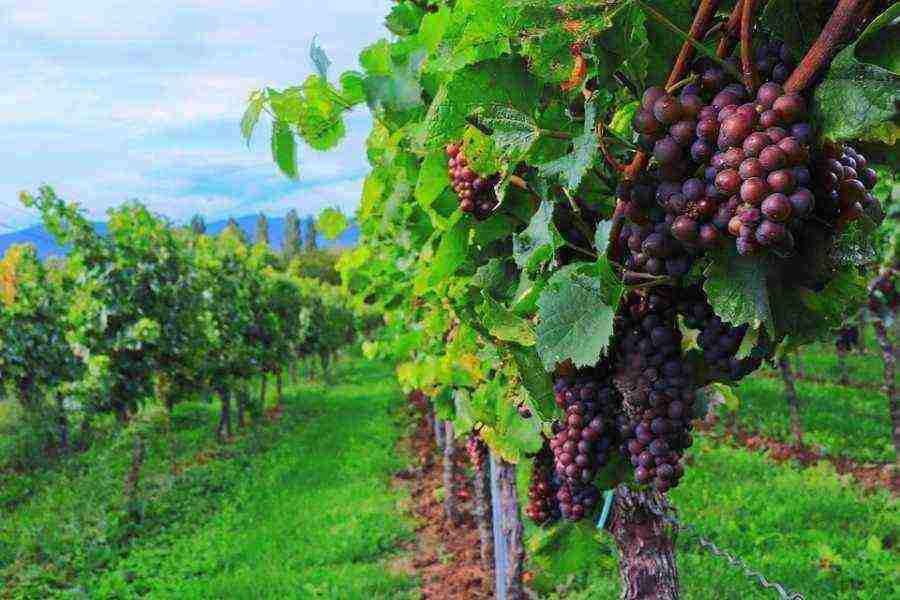
To distinguish real Crimean wine from counterfeit, you need:
- Buy alcohol in retail outlets that are licensed to sell products of the original brand, and for special connoisseurs it is better to visit the factory directly. Wine bottles should have proper storage, as this significantly affects the quality of the product, and they are unlikely to be able to provide the necessary conditions on the market or at home. A self-respecting brand always keeps an eye on this. Manufacturers very often create reliable multi-stage protection for their goods, information about which you can find on the official website.
- Look at the appearance of the product. The original brand has a bottle made of transparent dark glass so that you can always see the color of the drink and determine its age and variety, but at the same time, so that strong sunlight does not spoil the wine. Also pay attention to the cork, it should not crumble, leak or have a musty smell. A spoiled cork indicates that the conditions for proper storage of wine have been violated. Most likely, this is a fake, which should have a low price.
- Check the color and smell of the wine. Color is the main characteristic for identifying wine grades and aging. It is almost impossible to achieve the correct shade in low-quality products using dyes. The scent should be pleasant with soft notes of fruit. The fake smells like "alcohol".
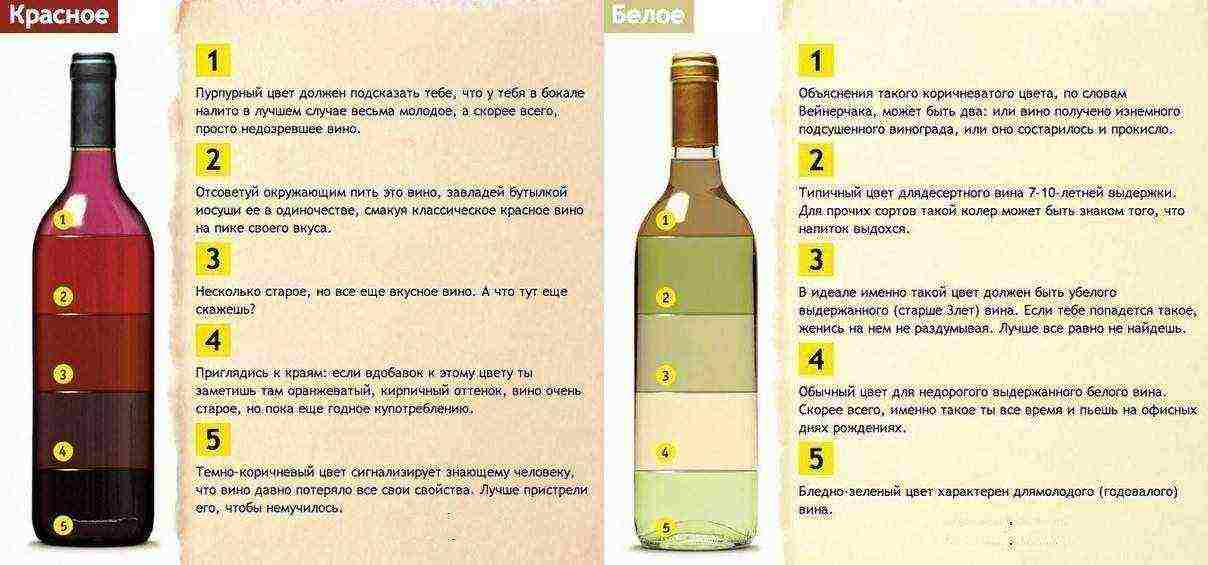
- Assess sediment and foam. Twirl the bottle in your hands. Good wines have minimal sediment, which should fill 1/3 of the bottom and settle quickly, and ideally shouldn't be there at all. For a fake, after you turn the bottle upside down, there will be too much of it, and it will creep along the walls of the vessel in a viscous mass. The foam of a quality drink will collect in the center and quickly subside, with a fake it will remain at the edges. Open the bottle and pour the wine into the glass while rotating slowly. A real elixir will leave traces of the "wine path" and the longer they remain, the higher the quality of the wine.
- If the previous four points did not help you, but use the "express" check:
- water - dip a spoon with a small amount of wine in a glass of water: if it is real, then the two liquids, due to their different density, should not mix. If the drink stains the water, then this is a fake;
- glycerin - add a drop to the wine and see how it manifests itself in the sediment. If the drink is real, then the color of the substance will not change; if it is fake, it will have a bright yellow-red color;
- soda - Pour a teaspoon of red wine on a heap of soda. For a fake, the color will not change, for a real one it will become dark with a blue tint.
Red and white wine from Crimea cannot but delight its connoisseurs. It was created according to exquisite recipes of Crimean winemakers and matured in the best cellars built from hundred-year-old southern trees. The quality combined with the incredible beauty of the bottle will make even the most sophisticated sommelier tremble with delight.A wonderful elixir can be enjoyed both at home in a cozy atmosphere with family members, and at a business lunch with colleagues at work. You can choose your own taste of wine for any food. If you are connoisseurs of meat, then choose strong table wines made from red grapes, light dessert wines are intended for lovers of sweets, and bright sparkling champagne for romantic evenings and long-awaited holidays.

If you are guided by the opinion of the best sommeliers when choosing a wine, they will point you to the elite wines recognized by generations of connoisseurs. These include the famous masterpiece of Prince Lev Golitsyn - "Novosvetskoe champagne", which was produced by the wine estate "New World". At the beginning of the 20th century, it became the best at the World Exhibition in Paris. After that, sparkling wine could be found on the shelves of shops under the name "Soviet". It should be noted that the modern recipe for champagne with the same name has nothing to do with Golitsyn. Unfortunately, the vine from which it was made was lost forever. At present, Crimean Champagne is the most popular of the Novy Svet brand. Then comes the red brut, and in third place is the semi-sweet red sparkling wine.
Also among the leaders are undoubtedly rich and high-quality sparkling drinks of the Inkerman Plant, the most delicious of which is Inkerman Rose, if you love semi-sweet pink, but in any case, from the whole variety of this winery's collection, you will find a taste to your liking. If we talk about newcomers to the alcoholic beverages market, then it is worth noting the wine "Agora", the taste of which is based on the delicious Saperavi.
From the princely collection, you can try another masterpiece - "The Seventh Heaven of Prince Golitsyn". A wonderful dessert wine with a honey-spicy aftertaste, perfect to complete any meal. Another unique specimen of the Massandra winery is Kagor Yuzhnoberezhny. This is the best drink of its kind, not only in Crimea, but throughout the CIS. Also, among the dessert wines, "White Muscat of the Red Stone", which is named after a rock located in Gurzuf, where wine is produced at a large factory of the same name, is highly prized.
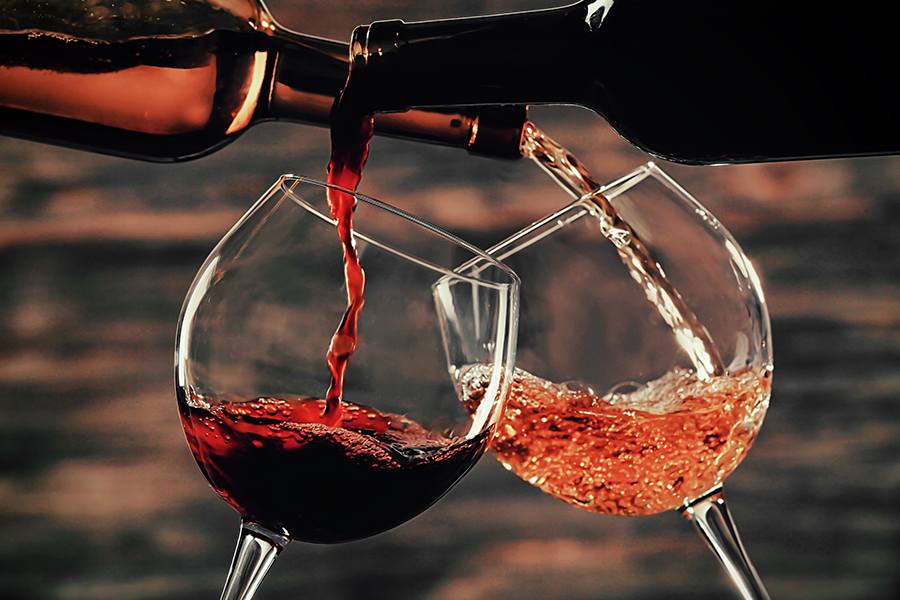
If you prefer strong red wine, then you just need to get acquainted with the popular Crimean creation - "Black Doctor", which is a brand of the "Solnechnaya Dolina" trade mark. A drink with its own legend, which says that for this drink a special variety of indigenous grapes Kefesia and Ekim Kara was bred by a doctor living in the Sun Valley. He was a real healer and an excellent winemaker, so the wine turned out to be excellent. Indeed, it has not only a rich harmonious taste, but also has useful components that have a positive effect on the work of the heart and improve blood circulation. For this, the elixir received the name "Doctor", and it became "Black" because of its rich dark garnet color. This rare brand of dessert wine was awarded 5 gold and one silver medals. Exposure - 2 years.
A popular high-quality red wine is also considered to be a branded strong - "Black Colonel". The only manufacturer is the Solnechnaya Dolina winery in Crimea.
The best vintage strong white wine is "Port White Surozh", produced since 1936 in the association "Massandra" Old Russian name of the city of Sudak. The wine is made from grapes of the indigenous variety Kokur white.
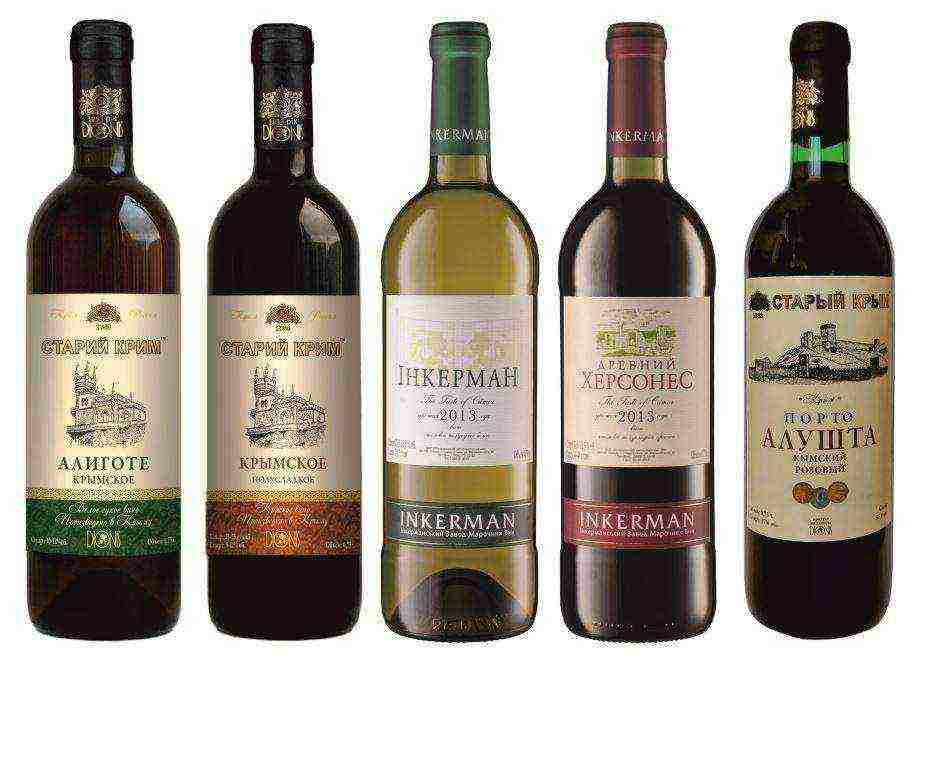
A number of the most famous table wines of Crimea are named after the varieties that make up one base of the drink or a whole blend. From white varieties and alcohol made from them are famous: "Chardonnay", "Aligote", "Rkatsiteli" and "Sauvignon". Sophisticated sommeliers also appreciate the taste of Kokura and Riesling.The best red wines are also rich in various types of Cabernet, Saperavi and Merlot. It can be enumerated for a long time, but these four brands are the most worthy of their kind:
- Cabernet Sauvignon is a red wine with a touch of chocolate, with aromas of young oak bark, cranberry and plum. It is often called the "king of wines" as it is the most popular.
- Chardonnay is a white table wine. The classic Crimean aftertaste contains notes of lemon and apple, and the aroma has a fruity sweet bouquet.
- Merlot is a noble dry red. Too tart drink for an amateur, but it is famous for its interesting taste with an admixture of vanilla, blueberries and black pepper.
- Shiraz is the most popular drink among men due to its high strength.
Table wines can be drunk daily. Red for meat, white for vegetable dishes, fish and seafood. Also below you can see a small memo on the combination of wine and food.
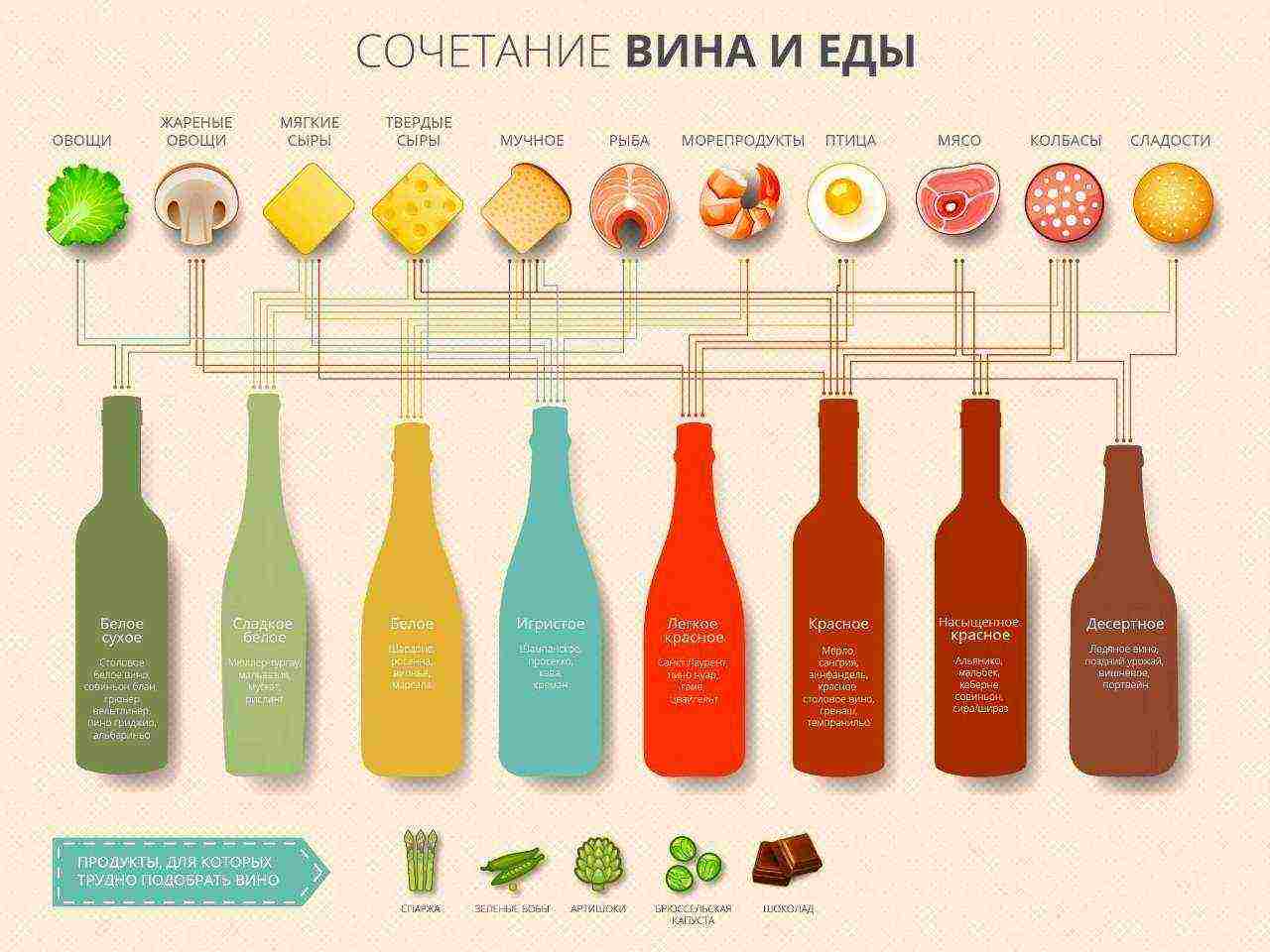
Check the price list before buying wine. In this article you will find some prices for the most delicious Crimean wine.
The most expensive are strong red wines, so the price for one bottle of "Black Colonel" you will give 1500 rubles, for the famous "Black Doctor" - 1000-1300 rubles.
Then comes the Massandra "White Red Stone Muscat", its cost is about 800-900 rubles. But this is an exception, since the price of other dessert wines does not exceed 200 rubles. White port of the Sudak plant will cost 100 rubles.
Table wines are in the range of 200-300 rubles. Wines on tap, sold in brand stores, are slightly cheaper, but also inferior in quality. Therefore, it is better not to spare money and enjoy a quality drink than to save money and ruin your long-awaited vacation.
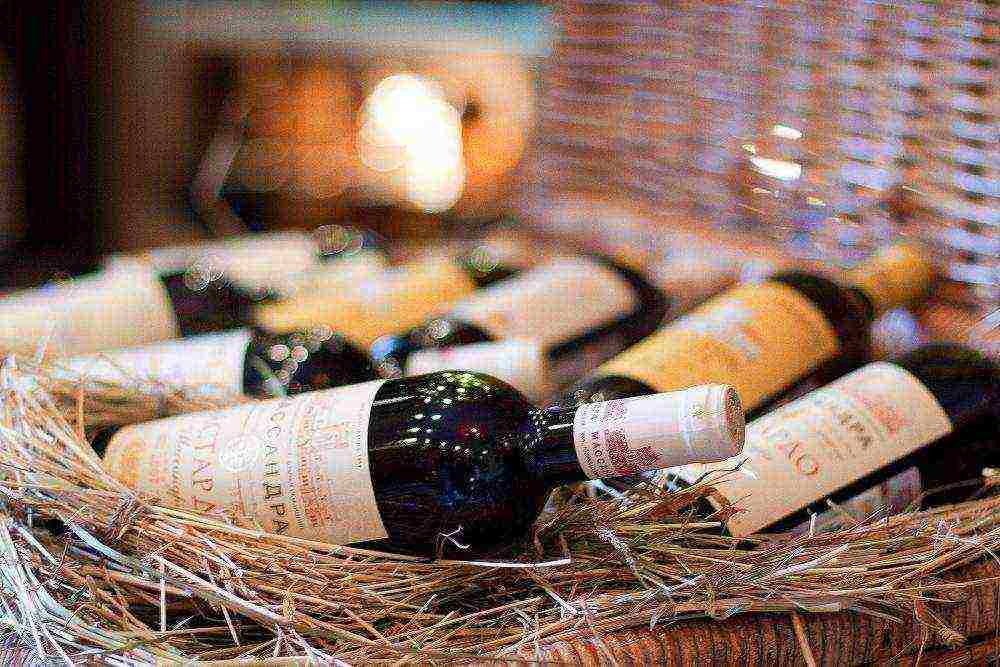
The Crimean land has been famous for its winemaking since ancient times. Here, every year for thousands of years, wine is created from the most delicious varieties of grapes - a creation of the human spirit, the mystery of nature itself. Drinking Crimean wine with a rich history and a huge baggage of world awards should not become a bad habit, but should emphasize the high culture of the one who uses them. For this, the wine must be natural. Do not use low-grade counterfeit - buy the best quality wine from Crimea.
Read also: Winemaking in Crimea, The best producers of Crimean wines
Rest in Crimea is unthinkable without a glass of good wine or a glass of good brandy. We say relaxation, but we mean wine, sea and sun.
I am deeply convinced that while vacationing in Crimea, in no case should you buy wine from random sellers. And the point is not even that it may be unsafe.
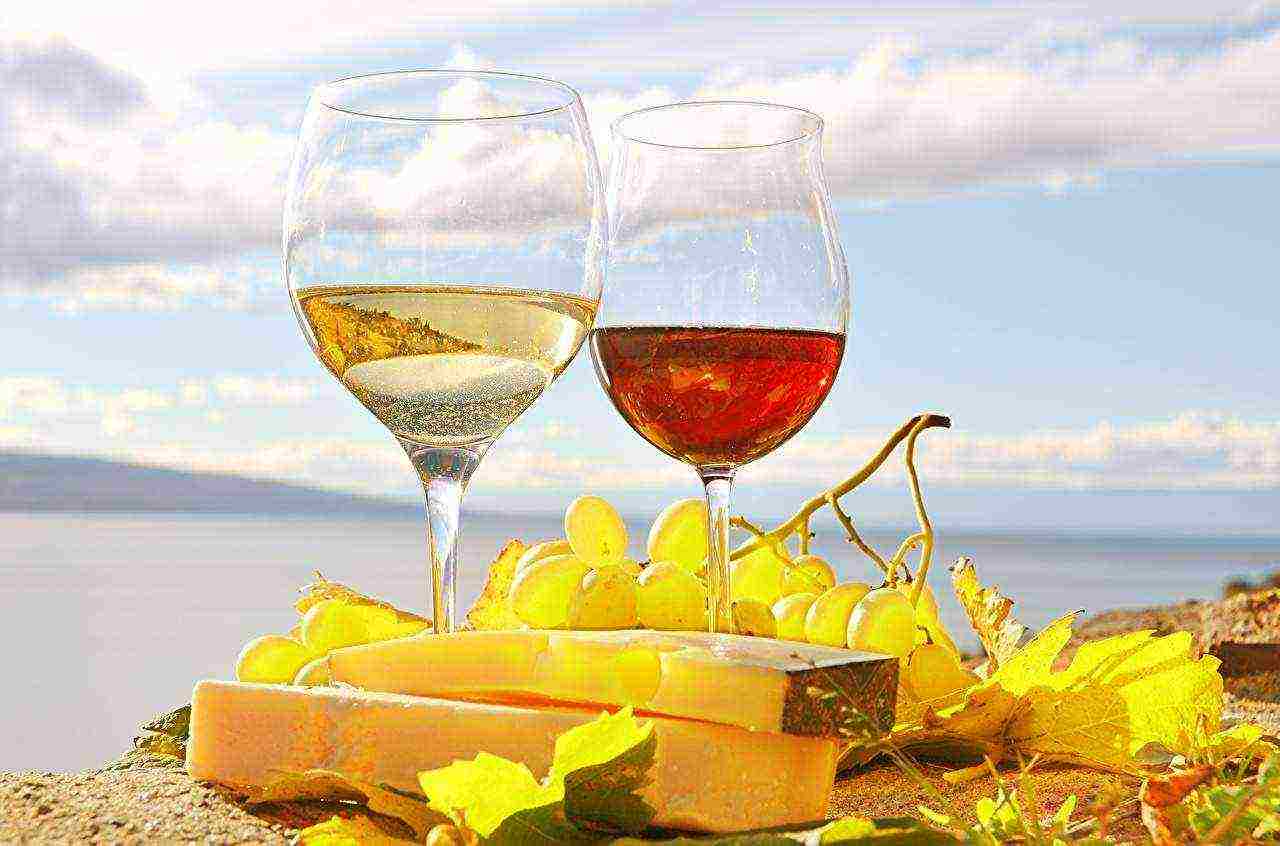 It seems to me that it is absolutely unforgivable to visit one of the best wine-making regions in the world and not get acquainted with the unique taste and aroma of the unique Crimean wines, which have been receiving top awards at international competitions for more than a hundred years.
It seems to me that it is absolutely unforgivable to visit one of the best wine-making regions in the world and not get acquainted with the unique taste and aroma of the unique Crimean wines, which have been receiving top awards at international competitions for more than a hundred years.
It is worth appreciating the bouquet and taste of Crimean wines. Learn the secret of their origin. Feel the spirit intertwined with the ancient history and nature of this wonderful place. Wines made from indigenous Crimean grape varieties are especially appreciated. Indeed, in other places there are simply no such wines.
In addition, the lion's share of wines that we find on sale at home, including expensive ones, are common consumer goods. For example, almost all champagne is produced in a cheap and massive way. And in Crimea, in New World, since the 19th century have been doing champagne according to classic French technology.
Only a few people know about this. In Crimea, they know how to make wonderful wine, but they don't know how to sell it yet.
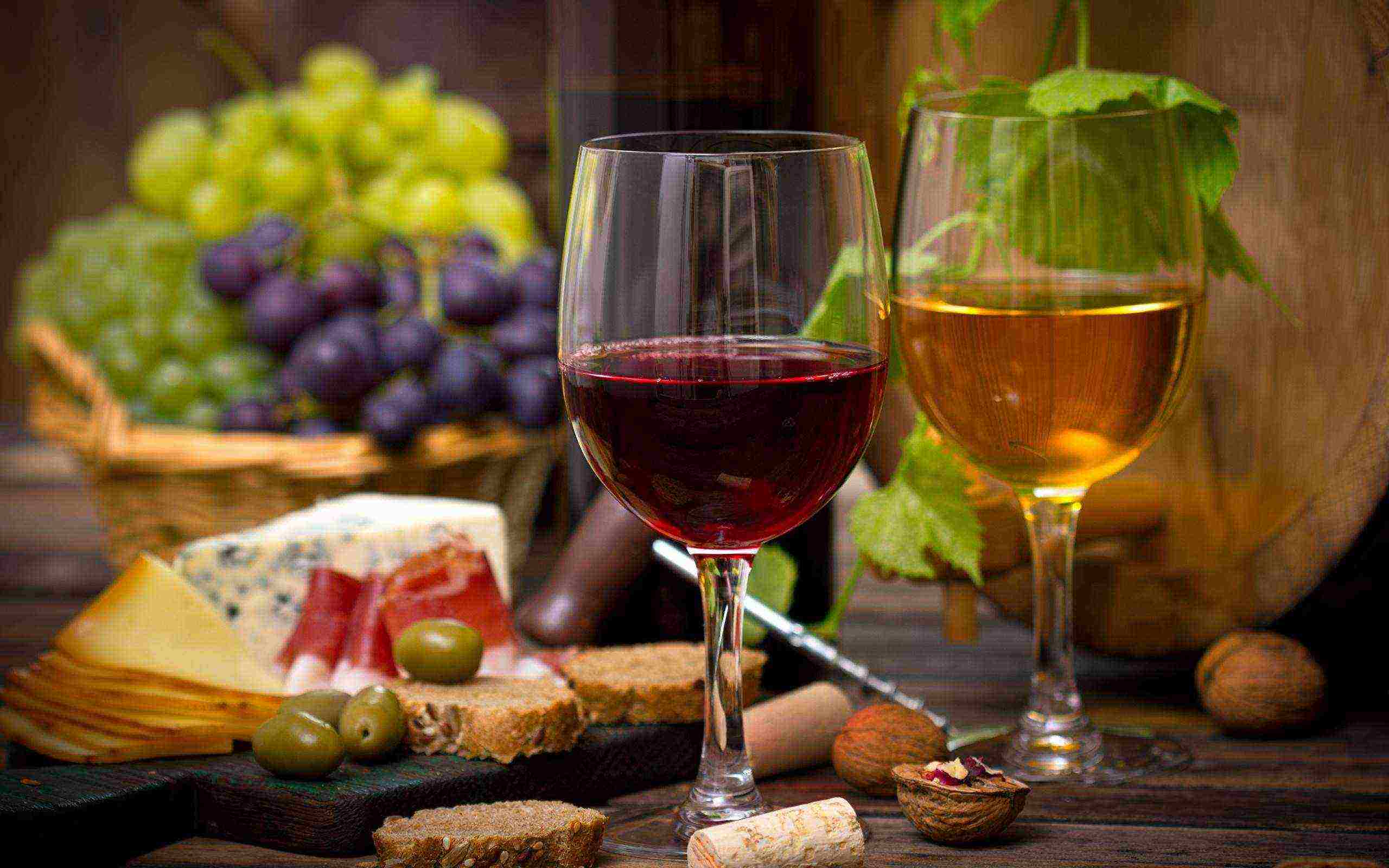 That is why I want to tell you about the best Crimean wine. Where to find it, how to choose and how to drink it correctly.
That is why I want to tell you about the best Crimean wine. Where to find it, how to choose and how to drink it correctly.
The wines of the Crimea are distinguished by a rich taste variety with a pleasant character of their own accents and aftertaste. Each connoisseur of wine will be able to choose his own drink - delicate or tart, bitter or sugary sweet. Each wine has its own characteristics and admirers.
Generally speaking, the southern vineyards are characterized by a spicy bitterness with a bright caramel aftertaste. For example, the white variety Aligote has an accent of floral flavor and caramel. But Rkatsiteli is more temperamental, with a strong, pronounced varietal accent.
There is a pattern here. The further north the vineyards are, the more sourness and accent of fruit taste are expressed in them.
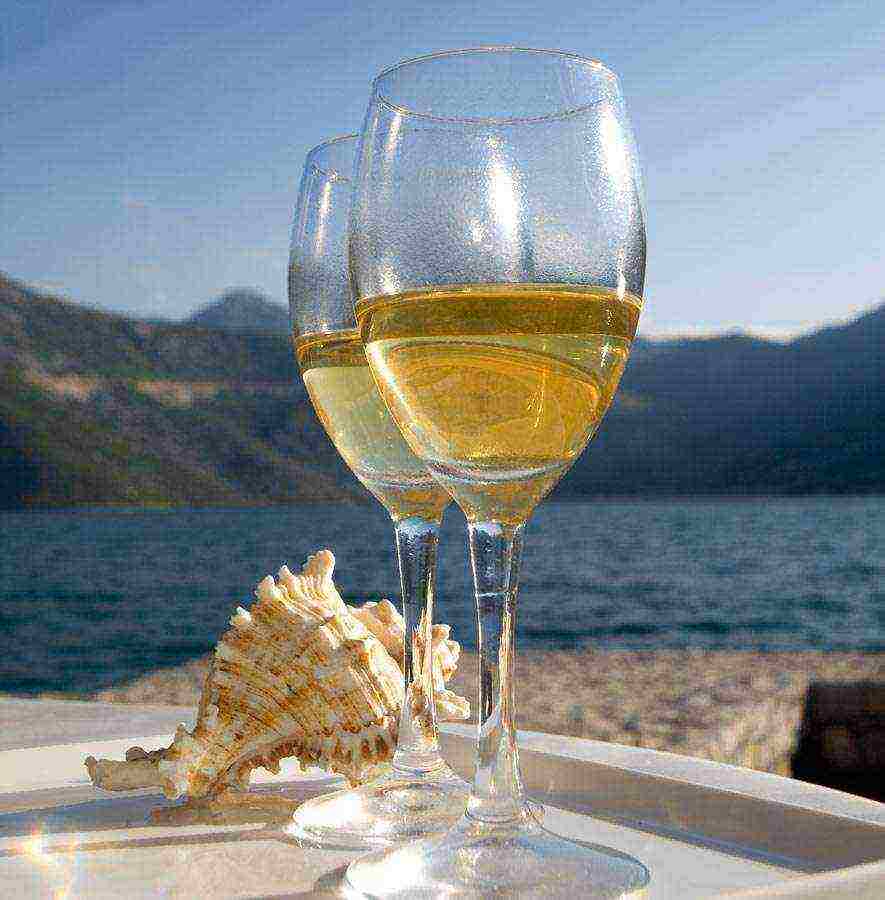 White varieties differ in color palette from pale yellow to straw and even golden honey.
White varieties differ in color palette from pale yellow to straw and even golden honey.
The dark ruby Chardonnay, in turn, is distinguished by its strength and full bouquet with an emphasis on fruity notes. The same is typical for Saperavi, in the properties of which there is a close relationship with the pomegranate drink, including the characteristic sweetness in the aftertaste.
The wines, made from varieties bred by selection, have absorbed the rich floral bouquet characteristic of the foothills and some of the southern territories of the peninsula.
Fortified wines
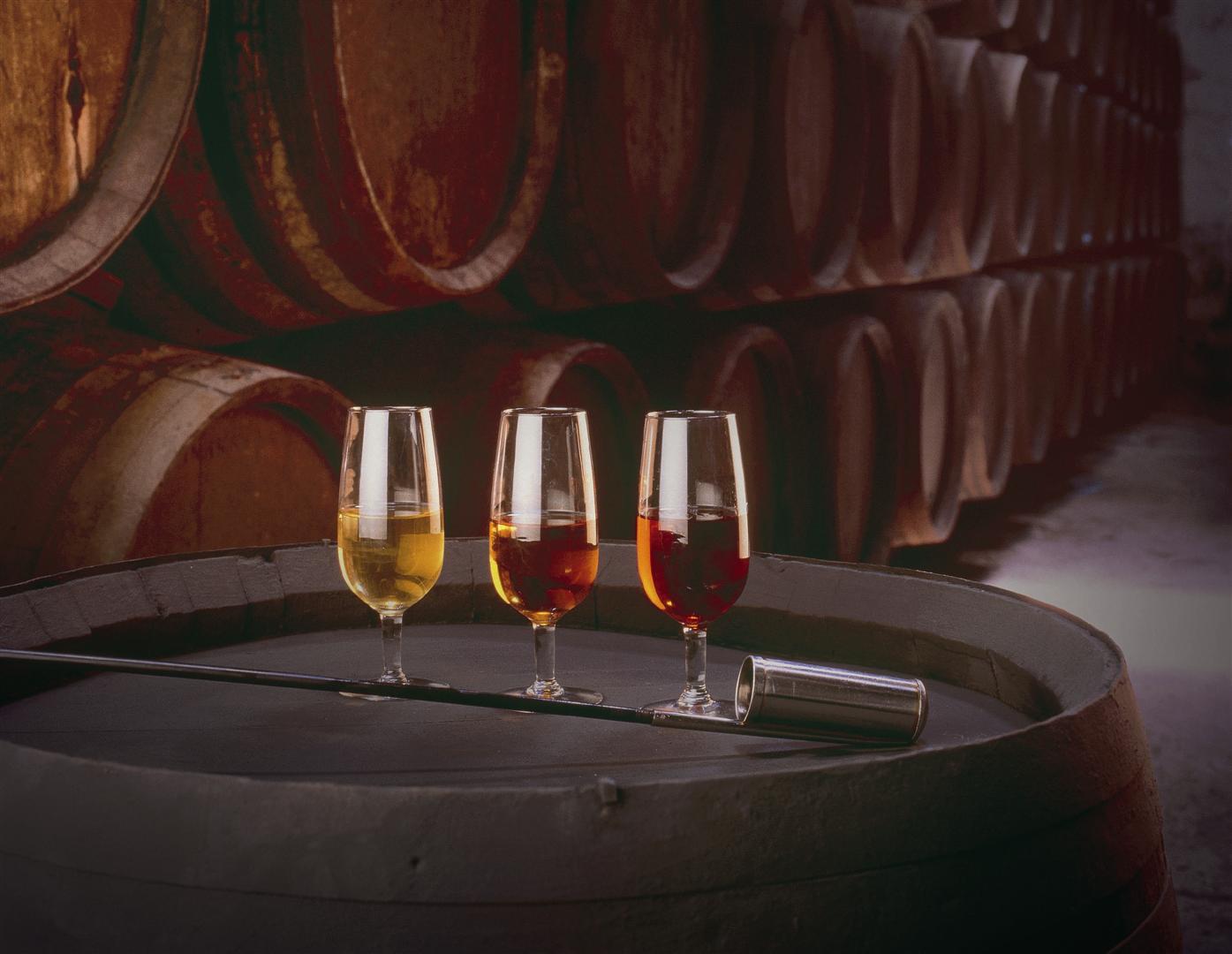 Port wines are produced from wines fortified in Crimea. Especially good are Massandra, and of the whites - Sudak. By the way, it was in Crimea that the first Russian ports were produced, so if you want to try Russian-made port, then opt for the Crimean one.
Port wines are produced from wines fortified in Crimea. Especially good are Massandra, and of the whites - Sudak. By the way, it was in Crimea that the first Russian ports were produced, so if you want to try Russian-made port, then opt for the Crimean one.
Sherry
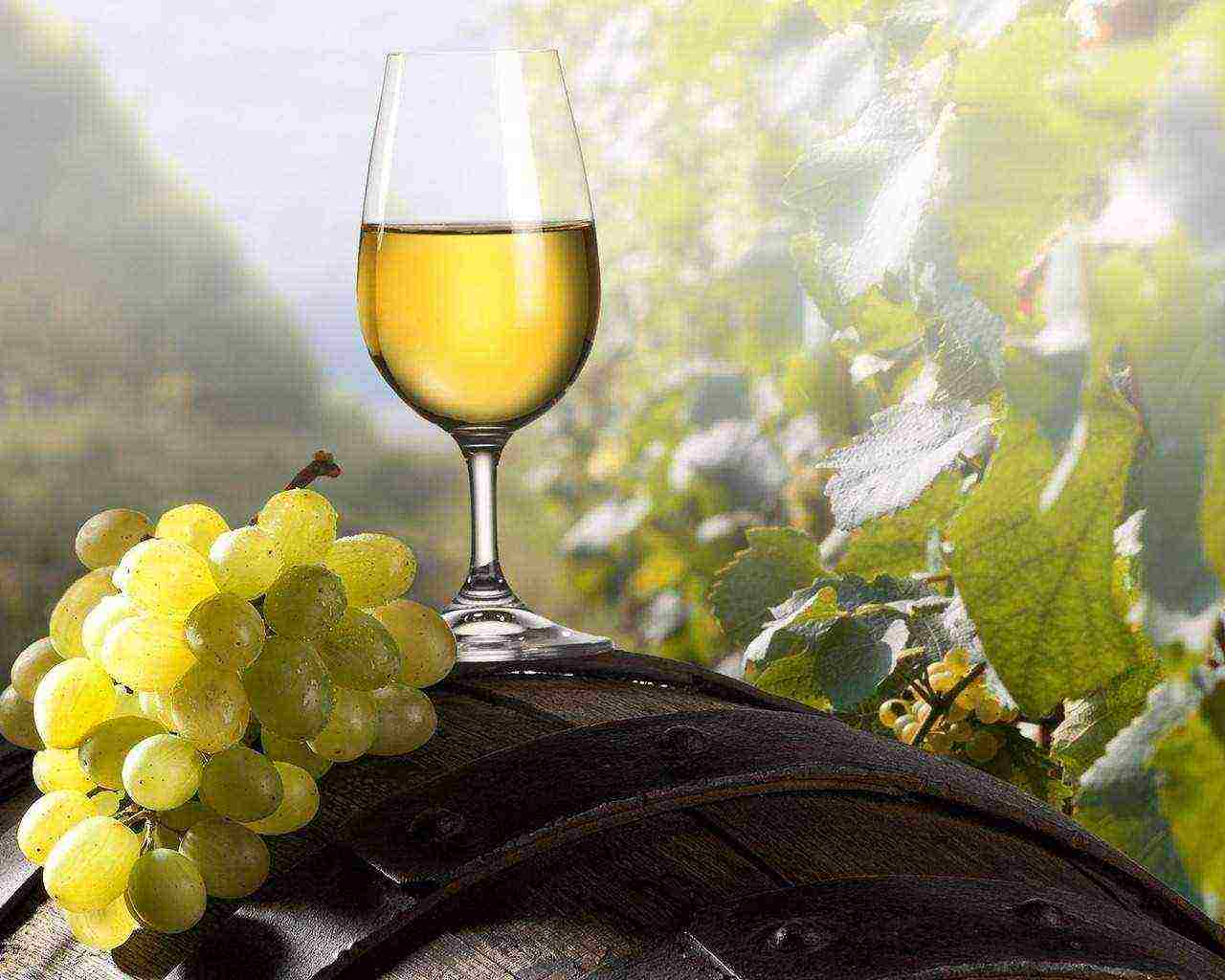 This wine comes from Spain, but, by the way, the first sherry outside this country was produced in Crimea at the beginning of the 20th century at the enterprise of G.N. Khristoforov in Simferopol. In Crimea, excellent sherry is produced, of course, in Simferopol, at the Dionysus plant, as well as in"Magarache" and Massandre.
This wine comes from Spain, but, by the way, the first sherry outside this country was produced in Crimea at the beginning of the 20th century at the enterprise of G.N. Khristoforov in Simferopol. In Crimea, excellent sherry is produced, of course, in Simferopol, at the Dionysus plant, as well as in"Magarache" and Massandre.
Dessert wines
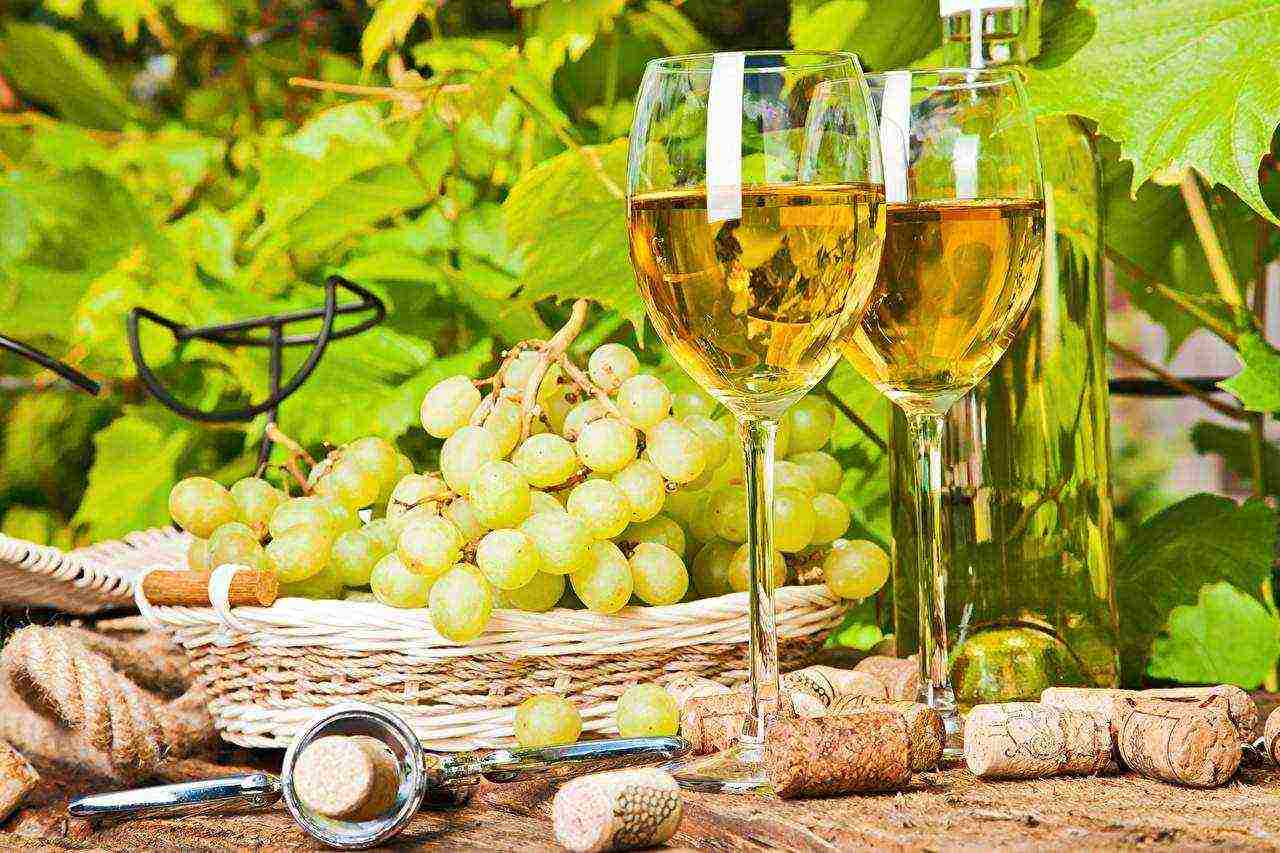 Crimean dessert wines are considered one of the best in the world, and White Red Stone Muscat is called the king of Muscat. The only Crimean wine that has twice received the Grand Prix Cup at winemaking competitions.
Crimean dessert wines are considered one of the best in the world, and White Red Stone Muscat is called the king of Muscat. The only Crimean wine that has twice received the Grand Prix Cup at winemaking competitions.
You should definitely try Crimean dessert wines with their unique aromatic bouquet.
Sparkling wine
 Champagne and sparkling wines are produced in two ways: classic bottled and accelerated tank.
Champagne and sparkling wines are produced in two ways: classic bottled and accelerated tank.
In the classic bottle method, champagne is produced only at the factory in New World... The plant is so unique that I would like to recommend reading about it separate story.
Some wines are so unusual that I would like to tell you more about them.
Sun Valley Wines
Only in Sun Valley, close to Pike perchFor many years they have been producing dessert and vintage wines, among which the brands "Black Doctor" and "Black Colonel" are the pride of local winemakers.
Sun Valley Doctor Black
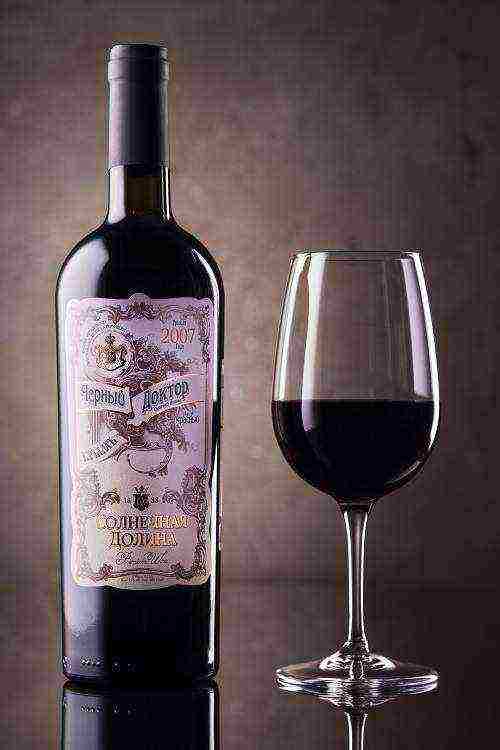 This Crimean dessert wine has a beautiful and deep garnet-red color and plays in the light with ruby highlights.
This Crimean dessert wine has a beautiful and deep garnet-red color and plays in the light with ruby highlights.
Its taste is deep and velvety, full and slightly tart, filled with aromas of dried pear, milk cream, morocco and Tsargrad mulberry. The "Black Doctor" bouquet is harmoniously balanced, intense, bright and memorable, with the main tones of dark chocolate, prunes and light hints of vanilla and licorice.
The piquant astringency does not prevent the wine from being soft, harmonious and harmonious due to the two-year aging "in oak". The aftertaste has a pleasant shade of cocoa and cream.
Recommended to be served at 16-18 ° С with dark chocolate, profiteroles, fruit salad, vanilla ice cream, as well as pistachios and blue cheeses. This wine complements the taste of the best cigars well.
Awards:
- Yalta "Golden Griffin" 2010: Gold medal
- Yalta "Golden Griffin" 2015 Grand Prix
- SVVR Cup Abrau - Durso 2016: Grand Prix
Only plant "Solnechnaya Dolina".
The legend about the healing properties of the "Black Doctor" was not born out of nowhere.
The Legend of the Black Doctor and the Black Colonel
A disciple of Avicenna, a doctor-healer, who knew magic, medicinal herbs and the laws of movement of heavenly bodies, lived in the village of Kozy in the Sun Valley. For his disinterested kindness, wise advice and talent for healing, the villagers called him their Doctor.However, the talent of this kind, intelligent and indefatigable person was not limited to healing alone. On his lands he was engaged in viticulture and after many years of work, he bred two extraordinary varieties of grapes, from the berries of which the Doctor prepared precious wine of the color of dark magic rubies. With the help of this wine, he worked miracles, bringing hopeless patients back to life. The fame of the Doctor and the miracle drink soon crossed the boundaries of Cimmeria.
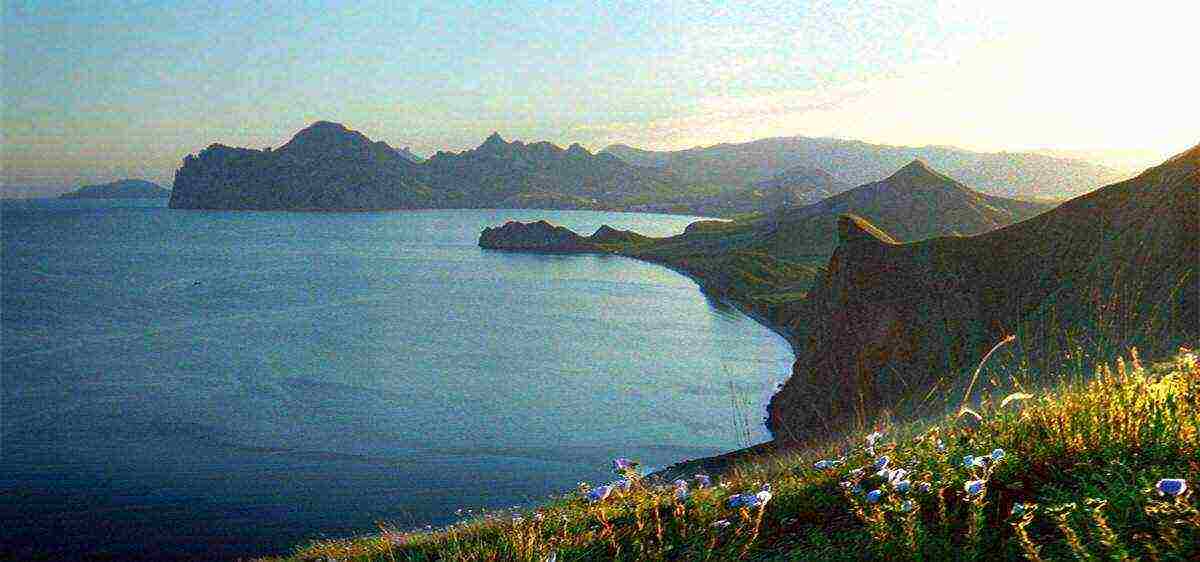 Once in this remote, deaf and enchanting Crimean corner, fate brought the Colonel, driven by the intrigues of the royal court. In a cozy house between mountains and forests, on the Black Sea coast, he spent his life hunting and long sincere conversations with the clever Doctor.
Once in this remote, deaf and enchanting Crimean corner, fate brought the Colonel, driven by the intrigues of the royal court. In a cozy house between mountains and forests, on the Black Sea coast, he spent his life hunting and long sincere conversations with the clever Doctor.
The Colonel's passion for hunting intensified over the years. He was by nature a brave and desperate man, and more than once risked his life. Once, during a regular hunt, the Colonel was seriously wounded by a shot boar-cleaver. Bleeding, the hunters brought him to the Doctor's house, but he was not at home.
The neighbors who arrived in time advised their friends to give the Colonel some miraculous wine to drink. Sincerely wanting to help, instead of a few drops, the comrades gave him a full jug of the magic potion to drink. A miracle happened this time too. The dying man opened his eyes and raised himself ... But the jug was too big. Instantly healing his flesh and regaining strength, the wine clouded his mind.
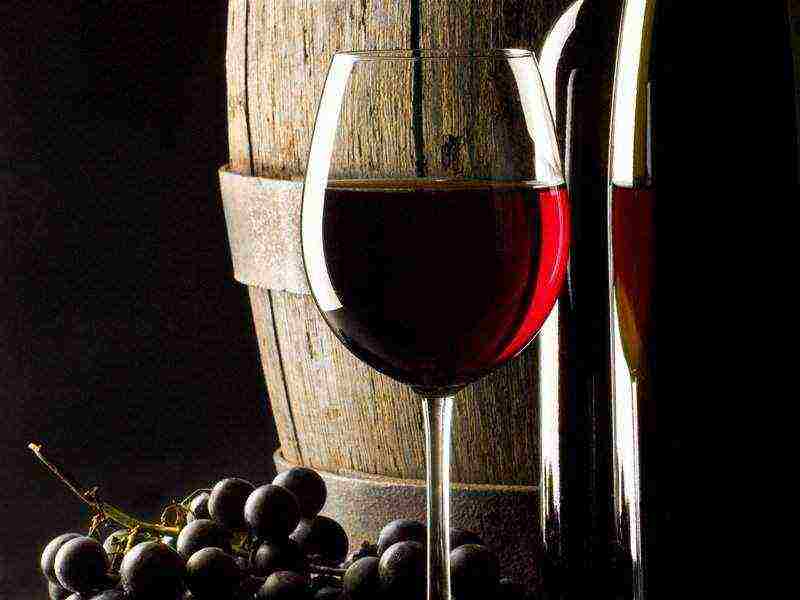 Drunk with wine, unwillingly, the Colonel attacked the Doctor returning at dusk and killed him, mistaking him for an enemy on the battlefield. And when he came to himself, the terrible news of his friend's death instantly and forever sobered him. He vowed not to drink a drop of wine again.
Drunk with wine, unwillingly, the Colonel attacked the Doctor returning at dusk and killed him, mistaking him for an enemy on the battlefield. And when he came to himself, the terrible news of his friend's death instantly and forever sobered him. He vowed not to drink a drop of wine again.
The villagers who revered the doctor-wizard, names in memory of this story gave names to the vines from his vineyard. One was named “Ekim Kara” which means “Black Doctor”, and the other “Cevat Kara” - “Black Colonel”.
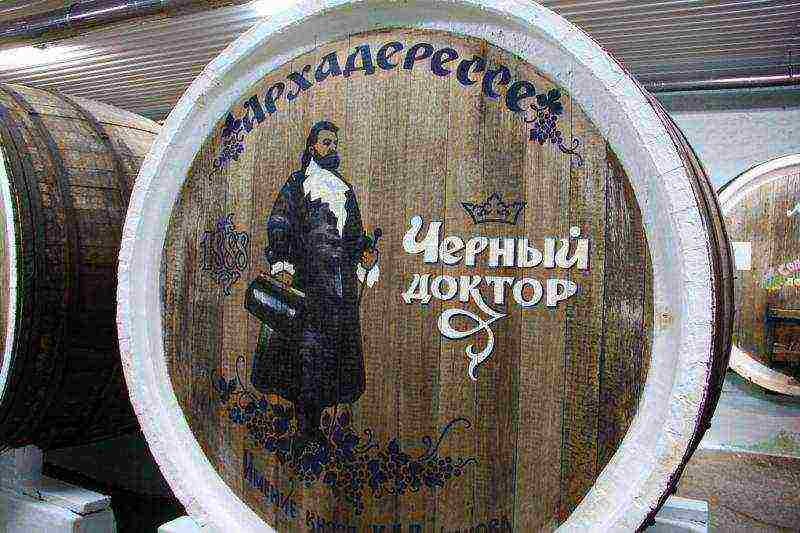 To this day, wines with such names keep in themselves, like fabulous living and dead water, two opposing principles: healing and destructive, like honey and poison ...
To this day, wines with such names keep in themselves, like fabulous living and dead water, two opposing principles: healing and destructive, like honey and poison ...
These indigenous varieties still grow and retain their taste and medicinal properties only in the unique soil and climatic zone of the Sun Valley, on the site of the former Doctor's vineyards. Transferred to other places and regions, these vines can give higher yields, but at the same time lose their unique taste.
Not so long ago, the Massandra factory tried to repeat this legendary wine, but its main secret lies in the local grape varieties that have been growing for centuries on the volcanic soil of the Sudak valley, feeding on the gifts of the land donated to this area many millions of years ago.
According to the ancient belief, wine should be used when a person loses blood, exhaustion and loss of strength. The wounded soldiers were washed their wounds and given this wine to drink.
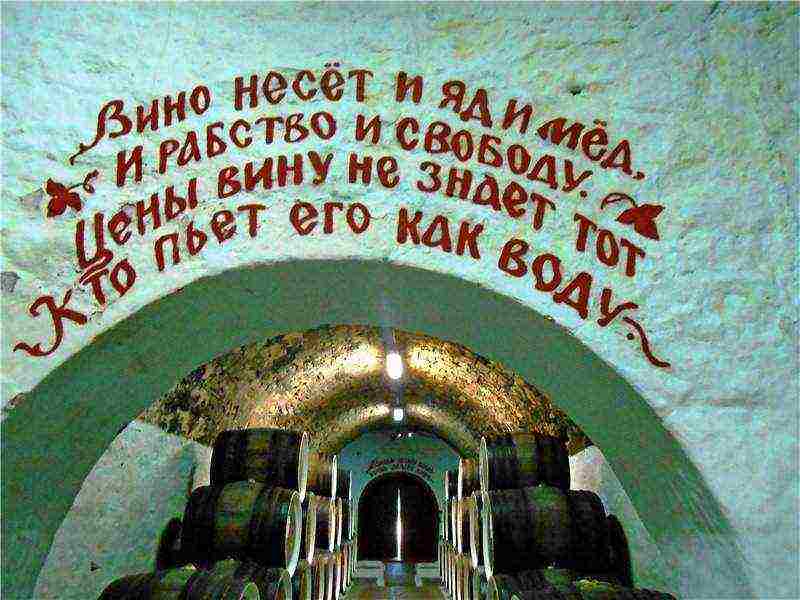 I would only like to remind you that it is necessary to observe the measure, and not to become like the Black Colonel.
I would only like to remind you that it is necessary to observe the measure, and not to become like the Black Colonel.
Be sure to try Black Doctor. This is a rare and therefore not cheap wine. But it's worth it. It is said to have miraculous healing properties to heal the soul and body. A bottle of this wonderful wine can be an excellent Crimean souvenir.
Black colonel Sun Valley
The wine has a deep, dark ruby color. It has a complex bouquet with tones of milk toffee, chocolate, prunes, and mocha. The taste is extractive, rich, full, with a taste of milk chocolate. Intense, pleasant, very long warm aftertaste.
Recommended to be served at 16-18 ° С with milk chocolate, hot baked goods, fruit salad, almond sorbet, as well as pistachios and blue cheeses.
Awards:
- Feodosia "Wine Festival" 2013 - Grand Prix
- Krasnodar "South Russia" 2016 - Gold medal
- SVVRabrau Cup - Durso 2016 - Gold medal
Sunny Valley White
The wine has an amber-golden color. The bouquet of this wine is honey-floral, with tones of exotic fruits and a hint of nutmeg.The taste is rich, soft, generous, with a smack of dried melon, fig, peach, rose hips, quince. The aftertaste is long, warm, enveloping.
Recommended to be served at 10-12 ° С with tiramisu, baked goods without chocolate, lemon sorbet, fruit salad, salted pistachios, foie gras, ice cream and blue cheeses.
Awards:
- Feodosia "Wine Festival" 2013: Gold medal
- Krasnodar "South Russia" 2016: Gold medal and Grand Prix
- Yalta "Golden Griffin" 2015: Gold medal
- Moscow "International Summit of Winemakers" 2015: Gold Medal
Port Crimean Sun Valley
The wine has an amber-golden color. It has a seductive bouquet with notes of kaisa, candied fruit, vanilla, nuts and hints of rancio. The taste is rich, full, with spicy honey tones, aftertaste of dried fruits and rye crust. Long-lasting aftertaste with well-defined aging tones.
Recommended to be served at 10-12 ° С with tiramisu, hot baked goods without chocolate, fruit salad, foie gras, candied fruits and blue cheeses.
.
.
.
Megan Red Sun Valley
Wine of intense ruby color. Its aroma is rich in hints of ripe cherries, chokeberries, currants, fruit yoghurt and morocco. The taste is extractive, velvety, with soft pomegranate tannins, coffee and vanilla tones. The aftertaste is long-lasting and spicy.
It is recommended to serve at 16-18 ° С with cold and hot meats, barbecue sausages, lamb shish kebab, dolma with yogurt, Pozhanskaya cutlet, as well as young Adyghe cheese with fresh herbs.
Awarded the Gold Medal at the Krasnodar South Russia 2016 exhibition.
.
Sun Valley Cahors
The wine is dark ruby color. Its bouquet contains tones of a compote of prunes, raisins, figs. It is spiced up by notes of dark chocolate and haze. Oily, juicy, enveloping taste leaves a sweet-spicy aftertaste with a taste of black currant jam.
Recommended to be served at 16-18 ° С with chocolate, pastries, fruit salad, salted pistachios and blue cheeses.
This wine was selected by the Russian Orthodox Church for liturgical purposes.
.
.
Sun Valley Muscat Festival
Wine of the color of the sunset sky. Its light aroma with hints of honey, apricot and tea rose, complemented by a light hint of lemon wormwood and ginger root. The oily, slightly sour taste leaves an aftertaste with the aftertaste of dried melon, figs and rose jam.
Recommended to be served at 10-12 ° С with tiramisu, pastries, fruit salad, salted pistachios and blue cheeses.
Awarded with the Grand Prix and People's Choice awards at the exhibition Feodosia "Wine Festival" 2013.
.
Sun Valley Privat
The wine is ruby-garnet color. This wine has a clean aroma with fruity tones and a light nutmeg note, and a full, harmonious taste with pleasant tartness with tones of dark chocolate. Differs in soft fruit velvety. Leaves a long, pleasant, memorable aftertaste.
Recommended to be served at 16-18 ° С with chocolate, pastries, fruit salad, salted pistachios and blue cheeses.
.
.
.
Wines of the New World
Elite premium champagne "New World. Coronation "
Grape variety: blend Chardonnay, Riesling, Pinot Franc.
Legendary Champagne plant "Novy Svet" harvest 1993. The wine is made on the basis of exquisite champagne wine materials grown on the best terroirs of the foothill Crimea. The recipe for this drink is a gift from history and goes back to 1896, when the Coronation champagne was first presented to the imperial table, in honor of the coronation of the Russian Tsar Nicholas II. 1994 - a significant year for the Novy Svet Sparkling Wine Factory - the rebirth of Koronatsionnoye champagne. A blend of three grape varieties - Chardonnay, Rhine Riesling and Pinot Franc. The harmonious combination of wine materials from three elite grape varieties gave birth to a delicate and aristocratic, ideal and harmonious balanced wine of warm amber color, with a lively mesmerizing shine.Spicy fullness and roundness, richness of taste, long aftertaste, enclosed in honey-citrus tones, keep age-old secrets and traditions. Champagne collection "New World" Coronation "- a wonderful decoration for a personal collection, keeping the soul of the creator.
Elite premium champagne "New World. Paradisio "
Grape variety - Chardonnay. Exposure: 3 years or more.
Champagne "Paradisio" inherited its noble name from the old name of the village New World ("Paradisio" in translation from ancient Greek - "paradise").
This wine, prepared according to a special recipe, served incognito in 1900 at the World Exhibition in Paris, received the highest rating from the tasting committee and won the Grand Prix Cup for the first time in the history of Crimean winemaking!
The unique recipe "Paradisio" was recreated only in 2000.
Monosort champagne “New World. Paradisio "is made from Chardonnay grapes using the classic Blanc de Blancs method. The grapes are selected by the "New World" champagne specialists at the last stage of ripening, processed at the factories of the primary winemaking of the Sevastopol zone of the Crimea and aged in the old Golitsyn cellars.
The wine of pale straw color with noble golden shine and gracefully waltzing bubbles has a rich elegant bouquet dominated by white wildflowers. The endless taste of this wine has a wonderful balance of minerality and freshness of the sea breeze, delicacy, fullness and truly heavenly delight.
Elite premium champagne "New World. Cuvée "
The grape variety is a blend of white varieties. Exposure: 3 years or more.
"New World. Cuvée ”keeps the quality of wine acquired in the process of champagne in its original form. From the whole variety of wines stored in the cellars of the "Novy Svet" individual batches of "Cuvée" are so harmonious that they do not require softening the taste by adding high-quality expeditionary liqueur to the wine.
Made from the best European grape varieties - Chardonnay, Pinot Noir, Rhine Riesling, Aligote, growing in the foothill "Crimean Champagne".
This wine has a light straw color with a lively shine and a mesmerizing play of bubbles. The aroma contains a bouquet of blooming grapes and wildflowers. The taste is fresh, light, with characteristic tones of minerality. Possible spicy bitterness, which gives an old vine over 25 years old. Serve with white meat, various hard spicy cheeses, seafood.
Elite varietal champagne “New World. Pinot Noir "
Brut / semi-dry pink
Grape variety - Pinot Noir. Excerpt: collector's item from 3 years old, aged from 9 months.
Champagne wine is prepared "in a white" method from an elite variety of Pinot Noir grapes grown on the marl soils of the Sevastopol zone. A light pink color is obtained naturally - since the skin of the grapes is painted black, the grapes are crushed with soft presses and the juice from the white pulp of the berry does not have time to stain on the skin. The art of the champagne is to maintain this lightness and obtain a champagne corresponding to the one produced in France under the name “rose”. This is not easy to achieve, as a result of which rosé champagne is valued more expensive than white.
The aroma of the wine is complex, harmonious, fruity with fruity tones.
The taste is rich, round, velvety, with a lollipop hint of monpacier. Its completeness is achieved by careful selection of Pinot Noir (Fran) grapes. "New World. Pinot Noir "is a great aperitif.
Brut goes well with seafood, hard cheeses, meat dishes, game.
Salmon pate, truffle desserts, baked venison, lobster are served as an exquisite semi-dry snack. Both brands are perfect for desserts (except for chocolate), and also in harmony with melon, pear and tropical fruits.
"New World. Pinot Fran "
Brut / semi-dry / semi-sweet pink
Grape variety - Pinot Franc.Exposure from 1 year.
The best single-varietal pink sparkling wine of Crimea in recent years. One of the most popular brands of sparkling wine, created in compliance with the full cycle of classic champagne technology. The color of the wine in the glass is recognizable - this is the color of the Crimean peach. In the very first nose, the aroma of fresh red fruits is perceptible. The Pinot Fran grape variety gave all the subtlety and elegance to the taste of the wine. The finish is rich, with juicy fruits, red currants and gooseberries.
A great pairing for a mono-varietal pink brute is seafood and cheeses.
Semi-dry is served with a cheese plate, nuts, combined with pears, apricots and red garden berries.
The wine is so versatile that it can serve as both an aperitif and a digestif. Semi-sweet is perfect for both fruits and grilled meat dishes.
Wines of Massandra
Dessert bastardo Alushta
Bastardo dessert Alushta formerly “Vladyka Chatyr-Dag”, “Bastardo Chatyr-Dag” is an ordinary red dessert wine. The only manufacturer "Massandra».
The wine is made from Bastardo Magarachsky and Krasnostop grapes. The production uses grapes with a mass fraction of sugar content of 24%.
The color is dark ruby. The bouquet contains shades of chocolate and prunes.
The wine is produced by the State Enterprise "Alushta", which is part of the State Corporation NPJSC "Massandra".
Awards:
- Cup "Grand Prix" "The second international professional tasting competition of wines and cognacs" in Kiev in 2006
- Gold medal at the international competition “Yalta. Golden Griffin-2003 ").
Cabernet Alushta
Cabernet Alushta vintage red table dry wine. The only manufacturer "Massandra".
It is made from Cabernet Sauvignon, Tsimlyansky black and Krasnostop Zolotovsky grapes.
The color is dark ruby. A bouquet with shades of morocco, pistachio and violet. The wine is aged for 2 years.
Awards:
- Silver medal at the international competition “Yalta. Golden Griffin-2003 "
- Bronze medal "The Second International Professional Tasting Competition of Wines and Cognacs" in Kiev in 2006
- Other medals
Kokur dessert Surozh
Kokur dessert Surozh vintage white dessert wine. The only manufacturer "Massandra".
Wine has been produced since 1945. The wine is made from the white Kokur grape variety. This variety was brought to the Crimea by the ancient Greeks. Due to the climatic features of the coastal areas of the peninsula, grapes are gaining a mass fraction of sugar at least 22%. It grows in the Alushta valley in the vicinity of the Chatyr-Dag mountain (southern coast of Crimea) and in Sudak Valley.
The wine is made using the technology of dessert wines and is aged for 2 years. The color is golden and amber. Bouquet with honey and floral shades.
Awards:
At international competitions, the wine was awarded prizes:
- Grand Prix Cup at the International Competition “Yalta. Golden Griffin 2012 "
- 8 gold medals (awarded with gold medals at the "Second International Competition for Grape Wines and Cognacs" in Yalta in 1970, at the International Competitions: "Yalta. Golden Griffin 2005" and "Yalta. Golden Griffin 2007")
- 2 silver medals.
- Awards in competitions: "Ljubljana" (1957), "Brussels" (1958), "Hungary" (1958 and 1960).
Madera Massandra
Madera Massandra is a vintage white strong wine. The only manufacturer "Massandra".
Wine has been produced since 1892. It is made from grape varieties Albillo, Verdelho (Verdelho) and Sersial (Sercial), growing mainly on slate soils. Grapes are used, the sugar content of which reaches 20%.
A feature of the production technology is the use of the maderization process, which in this case consists in aging the wine for 5 years in oak buttes on a special madeira site under the open sun. Due to this feature, the Crimean Madera is called “twice born by the sun”. During the production process, the wine loses 40% of its volume.
The color is gold. Bouquet with hints of red-hot walnut. The aging period is 5 years.
At international competitions, the wine was awarded 10 gold and 5 silver medals. Among them are awards at the competitions "Brussels" (1958), "Hungary" (1958 and 1960), "Crimea-wine 95", the Exhibition of Achievements of the National Economy of the USSR (silver medal), etc.
Muscat White Red Stone
White Muscat Red Stone vintage white liqueur wine. The only manufacturer "Massandra".
The wine brand was created in 1944 by Alexander Egorov. It got its name from the place where the grapes grow - from the reddish limestone rock Red Stone.
For the production of this variety, exclusively white Muscat grapes are used, growing on sunny plantations of the South Coast of Crimea, if its sugar content exceeds 29%. The wine matures in oak containers for at least two years.
The color of the wine is light amber. The aroma of nutmeg with honey tones of flowers, herbs of alpine meadows, tea rose, orange peel. A light citron is felt in the taste.
At international competitions it was awarded "Super Grand Prix", 3 "Grand Prix" cups, 22nd gold, 1th silver medals and is the most titled Crimean wine.
Red Stone White Muscat has twice been declared the best wine in the world at international tasting competitions.
“Gentlemen! Wine of such high quality is disrespectful to drink while sitting ... ”- English wine expert Dr. Teicher.
Queen Elizabeth II of England highly appreciated this wine. In the 1960s, “Massandra” sent a two-hundred-liter barrel of White Red Stone Muscat to her personally through the Leningrad port every year.
White Muscat Livadia
White Muscat Livadia is a vintage white liqueur wine. The only manufacturer "Massandra".
Wine has been produced since 1892, and is made from the White Muscat grape variety, which grows on the southern coast of Crimea between the villages of Foros and Nikita. Only grapes with a sugar content of 33% are used. Achieving the required concentration of sugar in grapes is facilitated by its wilting on the bushes.
The color is rich, amber. A bouquet with sophisticated honey and raisins. The wine is aged for 2 years.
At international competitions, the wine was awarded 2 Super Grand Prix cups, 2 gold (one of them at the Second International Competition of Grape Wines and Cognacs in Yalta in 1970) and silver medals. Among them the award at the competition: "Brussels" (1958).
Demerdzhi nectar
Demerdzhi's nectar is an ordinary white dessert wine. The only manufacturer "Massandra".
Wine has been produced since 2000. It is made from the green Sauvignon and White Kokur grape varieties. For the production of this wine, a prerequisite is the achievement of a mass fraction of sugar in grapes of 23%. Relatively small areas of green Sauvignon grape plantations allow the production of wine in the volume of no more than 2000 decaliters.
The color is golden. A bouquet with hints of honey and pear.
At the international competition “Yalta. Golden Griffin-2003 "wine was awarded a silver medal. At the professional tasting competition at the 10th International Specialized Exhibition "Alco + Soft 2005", the wine was awarded a silver medal.
Pinot gris Ai-Danil
Pinot Gris Ai-Danil is a vintage rosé liqueur wine. The only manufacturer "Massandra".
The wine has been produced since 1880 and is made from the Pinot gray grape variety, which grows in the vicinity of the village of Danilovka on the southern coast of Crimea. This area is especially favorable for the growth of grapes. A prerequisite for the production of this wine is that the grapes reach a sugar content of 30%.
Dark amber color. A bouquet with hints of quince and rye bread crust.
At international competitions, the wine was awarded 10 gold (awarded a gold medal at the "Second International Competition of Grape Wines and Cognacs" in Yalta in 1970 and a large gold medal at the International Competition "Yalta. Golden Griffin - 2008") and 3 silver medals ...Among them are awards at the competitions Ljubljana (1955), Brussels (1958), Hungary (1958 and 1960).
Port wine red Livadia
Livadia red port is a vintage red strong wine. The only manufacturer "Massandra".
Wine has been produced since 1891. This brand of wine was kept in the wine cellars of Emperor Nicholas II. It is made from the Cabernet Sauvignon grape variety, which grows on the southern coast of Crimea. Only grapes with a sugar content of 22% are used. The grapes grow mainly on slate soils.
Deep garnet color. Bouquet with morocco tones. Taste with hints of cherry pits. The wine is aged for 3 years.
At international competitions, the wine was awarded 3 gold and 5 silver medals. Among them are awards at competitions: "Ljubljana" (1955), "Brussels" (1958), "Hungary" (1958).
Port Red Massandra
Port Red Massandra is a vintage red strong wine. Exclusive manufacturer "Massandra".
Wine has been produced since 1894. The official name of those years is "Massandra No. 81". In 1941, the port wine production was evacuated to Tbilisi. In 1945 he returned to the basements of the Massandra plant. The grape variety Mourvèdre is used for the production with a slight addition of European red varieties. Vineyards of this type are grown in areas between the mountains Koshka and Kastel. For the production of port, grapes with a sugar content of at least 20% are used.
The wine is aged in oak containers for three years in the cellars of the Alupka winery. During this period, several overflows are made. Open and closed in the first year and closed in the third year.
The process of port wine making, which lasts for three years, allows the wine to accumulate special qualities that are so attractive in the drink.
The color is a dark shade of ruby. The aroma is bright varietal with unobtrusive tones of nightshade. Over the years, the bouquet acquires cognac notes. Exposure - three years.
"Red Port Wine Massandra" is the winner of a silver medal, a diploma of the second degree, received at the competition "Crimea Wine" in 1995.
Tasting marks 1944, 1946 - 10 points; in 1945 - 9.9; 1947 - 9.8; 1948, 1949, 1951-1953 - 9.5; 1950 - 9.7; 1954 - 9.4 points; 1989 - tasting of port wine, vintage 1984. The highest score is 10.0.
South Coast red port
South Coast red port is a vintage red strong wine. The only manufacturer "Massandra".
Wine has been produced since 1944. It is made from grapes Bastardo Magarachsky, Malbec, Morastel, which grow on the southern coast of Crimea. Use only grapes containing a mass fraction of sugar 22%. The grapes grow on slate soils, on the territory from the village of Simeiz to Mount Kastel.
Dark ruby color. Bouquet with tones of prunes, cherry pits and black currants. The wine is aged for 3 years.
Previously produced under the brands: "Red Port Alushta" and "Red Port Tavrida".
At international competitions, the wine was awarded the Grand Prix Cup (at the Crimea-Wine 96 competition), 3 gold (one of them at the Crimea-Wine 95 competition and one at the Second International Competition of Grape Wines and Cognacs in Yalta 1970) and 4 silver medals. Among them the award at the competition: "Brussels" (1958).
Semillon Alushta
Semillon Alushta is a vintage white table dry wine. The only manufacturer "Massandra".
Wine has been produced since 2001. It is made from Semillon grapes. This grape variety was brought to Crimea in the 18th century. It grows in the Alushta Valley in the vicinity of Chatyr-Dag. Grapes are used that have reached a sugar content of 18-22%.
The color is straw. The bouquet is refined, typical for this grape variety. The wine is aged for 1.5 years at a temperature of 14 ° C.
At the international competition “Yalta. Golden Griffin-2003 "wine was awarded a silver medal. At the professional tasting competition at the 12th International Specialized Exhibition "Alco + Soft 2007", the wine received the 1st place among still wines.
Table red Alushta
Table red Alushta is a vintage table red wine. The only manufacturer "Massandra".
The wine brand was first produced in 1937. For the production of grapes used Cabernet Sauvignon, Saperavi, Morastel.A favorable place of growth of which are the vicinity of Alushta and the foothills of the mountains surrounding the valley of the same name, since this area in terms of soil composition and climate corresponds to the necessary growing conditions for red grape varieties. The main condition for used in the production of grapes is the concentration of sucrose in the volume of 18-22%.
The wine has a deep red color with garnet tints. Due to the content of Cabernet Sauvignon grapes in the wine, it has "morocco" tones. The taste of wine with sourness, sophistication and spice. It is aged in oak containers for 2 years.
The wine was awarded 6 gold (3 of them at international competitions (Awarded a gold medal at the "Second International Competition of Grape Wines and Cognacs in Yalta in 1970")) and 1 silver medal at an international competition. Received a gold medal and a first degree diploma at the professional competition "Crimea-wine 95".
Surozh (port)
Port white Surozh is a vintage white strong wine. The only manufacturer "Massandra". Place of manufacture - state farm-plant Zander.
White port Surozh has been produced since 1936. Until that time it was known as "Port Su-Dag".
According to the official version, it got its name from the ancient Russian name of the city of Sudak - Surozh. The best microdistricts for the production of port are the valleys of the Sudak region.
It is here that the indigenous grape variety Kokur white grows, which is used for the production of Sourozh port. Harvesting is carried out no earlier than 18% of sugar accumulates in the bunches. Kokur makes up 85-95% of the total volume of raw materials, the rest is made up of white, pink and red varieties: Zerva, Zand, Shabash.
White Port Surozh is a 3-year-old strong wine. Aged in oak containers in the cellars of the Sudak winery, the port acquires a golden hue and a stable bouquet. The taste is soft, harmonious, combining fruit-honey tones and Tokay notes.
The high quality of the wine was confirmed in 1970. At the international competition in Yalta, white port Surozh won a gold medal.
Tokay South Coast
Tokay Yuzhnoberezhny is a vintage white dessert wine. The only manufacturer "Massandra".
Wine has been produced since 1932. The wine is made from Furmint and Gars Level grape varieties, which grows on the southern coast of Crimea. These grape varieties are "Tokay varieties" and were brought here from the vicinity of the city of Tokay. Grapes are used that have reached a sugar content of at least 26%. This is facilitated by a large number of sunny days and warm soil.
The color is golden and amber. Bouquet with hints of bread crust and quince jam. The wine is aged for 2 years.
The wine was awarded at international competitions: the Grand Prix Cup, 18 gold and 3 silver medals. Among them are awards at competitions: "Ljubljana" (1955) and (1958), "Brussels" (1958), "Hungary" (1958), "Yugoslavia" (1958), "Yalta" (1970) and (2006).
Jerez Massandra
Jerez Massandra is a vintage white strong wine. The only manufacturer "Massandra".
Wine has been produced since 1944. The wine is made from grape varieties Albillo, Verdello and Sersial. It has a peculiarity in production technology. It is formed with the help of sherry yeast, and at the next stage it is subjected to heat treatment, which contributes to the formation of useful organic compounds in the wine.
The color is golden with a slight sheen of light green. A bouquet with notes of bitter almonds and roasted nuts. The wine is aged for 4 years.
The wine was awarded at international competitions: the Grand Prix Cup, 11 gold and 2 silver medals. Among them the award at the competition: "Brussels" (1958).
Magarach
White Muscat Magarach
White Muscat Magarach is a vintage white liqueur wine. Producer - Institute of Viticulture and Winemaking "Magarach".
Wine has been produced since 1836, and is made from the White Muscat grape variety, which grows on the southern coast of Crimea in the village of Otradnoye. Only grapes with a sugar content of 30% are used. The grapes are harvested by hand. The wine is aged for 2 years.
For 150 years, the technology for the production of this wine has been constantly improved. Such famous winemakers as: Gasquet F.I., Serbulenko A.P., Okhremenko S.F., Preobrazhensky A.A. took part in this process at different times.
Color - from light golden to dark golden. A bouquet with hints of May honey, nutmeg, tea rose petals, alpine herbs and citrus fruits. The taste is rich, full, buttery with hints of orange peel and a long aftertaste.
At some tastings, as a sign of respect for the white Muscat "Magarach", it is tasted standing.
At international competitions, the wine was awarded the Super Grand Prix Cup, 3 Grand Prix cups, 49 gold and 4 silver medals. Among them are awards at international competitions: a gold medal at the "World Exhibition" in Vienna (Austria) in 1873, a gold medal at the "International Wine Exhibition" in Yalta (USSR) in 1955, a gold medal at the "International Wine Tasting" in Budapest (Hungary), a gold medal in Paris (France) in 1993, a gold medal at the VI International Specialized Exhibition-Fair "Wines and Drinks" in Krasnodar (Russia) in 2003, the "Super Grand Prix" Cup at the International Competition "Yalta ... Golden Griffin - 2004 "in Yalta, a gold medal at the International competition" Yalta. Golden Griffin - 2009 "and others.
Inkerman Vintage Wine Factory
Sevastopol
Sevastopol is a vintage white strong wine (like white port). The only producer is the Inkerman Factory of Vintage Wines.
For the production of wine grapes are used Kokur white, Sauvignon, Riesling, Rkatsiteli. These grape varieties grow on the territories of the wineries of the "Inkerman Vintage Wines Factory" located in the southwestern part of the Crimean peninsula.
The wine has an amber-golden color. The taste of the wine contains the characteristic features of aging and is distinguished by its softness. Bouquet with hints of roasted walnut, quince and melon. It is kept in oak containers for 5 years.
The wine of the 1994 harvest was included in the Grand Reserve collection, created in 2008. It includes the best wines of the "Inkerman Vintage Wines Factory", which have a maturation period of over 3 years. This wine became the best wine of 2009 at the International Wine and Spirits Tasting Competition “Grand Collections-2009” in Moscow, receiving a gold medal.
At international competitions, the wine was awarded the Grand Prix Cup, 7 gold and 2 silver medals.
Factory of vintage wines and cognacs "Koktebel"
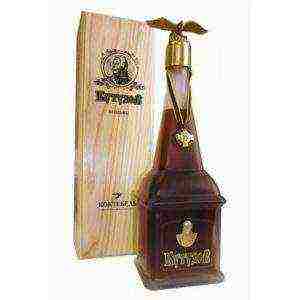 The plant produces cognacs of various categories, including ordinary, vintage, collection and VIP cognacs. So, from ordinary cognacs the plant produces three-year cognac "Three stars", four-year cognacs "Kara-Dag" and "Koktebel 4", as well as five-year cognac "Five stars".
The plant produces cognacs of various categories, including ordinary, vintage, collection and VIP cognacs. So, from ordinary cognacs the plant produces three-year cognac "Three stars", four-year cognacs "Kara-Dag" and "Koktebel 4", as well as five-year cognac "Five stars".
You should also pay attention to aged cognac (KV), old cognac (KS) and very old cognac (OC) from cognac spirit of middle age at least 6, 10 and 20 years, respectively. From vintage cognacs it is necessary to highlight "Koktebel", "Koktebel-KS", "Koktebel-Rarity" and "Crimea".
VIP cognacs "Kutuzov" (25 years old) and "Macedonskiy" (30 years old), produced by the factory of vintage wines and cognacs "Koktebel", belong to the OS category.
The plant also produces table wines (Aligote, Chardonnay, Cabernet, Saperavi, Pinot-Fran, Monte Blanc, Monte Rose, Monte Rouge), strong (port, Madeira) and dessert (Old Nectar, Kokur, Talisman, Muscat, Kara-Dag, Cahors).
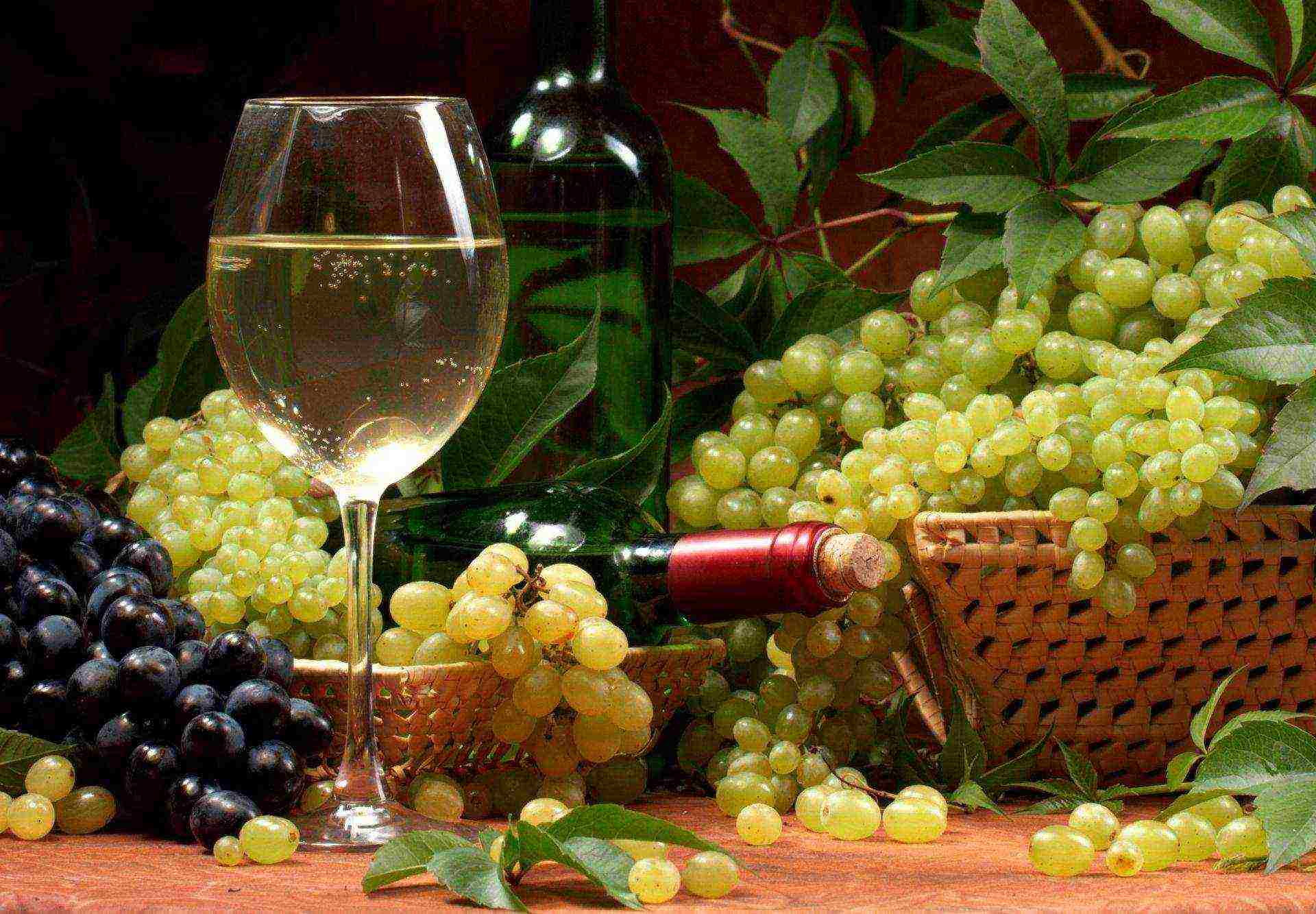 Of course, the best collection wines are affordable only for those who have access to masterpieces of painting or other rarities, but fine vintage Crimean wines are much cheaper than imported "consumer goods" and, no doubt, much cheaper than their true market value.
Of course, the best collection wines are affordable only for those who have access to masterpieces of painting or other rarities, but fine vintage Crimean wines are much cheaper than imported "consumer goods" and, no doubt, much cheaper than their true market value.
And finally, I would like to give one important advice.
In Crimea, in addition to the main producers, there are many different wineries that produce good wine. Even among the household, you can find quite good. But, unfortunately, there are also quite a few frankly mediocre wines.And street tasting presentations often offer outright fakes.
To protect yourself from them, buy Crimean wines only in brand stores.
Read also:Winemaking in Crimea, The best producers of Crimean wines
Crimean wines are drinks for sophisticated connoisseurs with developed taste. Due to the observance of long established traditions, these wines have been delighting consumers with their unique bouquet and excellent aroma for decades. Many wine lovers give their preference to exactly those specimens that were made in Crimea.
Crimean wines
Thanks for such high-quality and popular products should be those masters who are engaged in the production of vintage wines at numerous factories located on the Crimean peninsula. The most famous of them:
- Inkerman;
- Gold amphora;
- New World;
- Massandra;
- Golden beam;
- Koktebel;
- Sevastopol Sparkling Wine Factory.
An interesting fact - the Koktebel plant, in addition to producing wines, also produces cognac of amazing quality.
White wines of Crimea
White wines from Crimea deserve special attention among the variety of varieties. One has only to remember the same port "Cabernet" - a vintage white wine made using the special grape "Cabernet Sauvignon", which grows near the town of Alupka.
The taste will not be immediately clear to a common man in the street - the wine begins to play with shades of aromas with might and main and fully disclose the gamut when the aftertaste comes - only then you can feel how everything inside seems to be filled with a barely noticeable aroma of almonds and various tropical fruits. In general, the drink tasted rather soft, and at the same time slightly viscous.
"South Coast" white port
If the story is about the white wines of Crimea, one cannot fail to mention the "Yuzhnoberezhny" white port. Still - the drink is rightfully recognized as the best in its class. The grape variety, which is used for the production of "South Coast" port, is not familiar to everyone and bears the exquisite name "Aligote", or its alternative - "Semillon" can be used. The color of the wine depends on which variety will be chosen for making wine. The drink has several color options, from bright white to dark with a hint of amber. This wine has a very unusual taste, vaguely reminiscent of roasted peanuts.
And here are some more popular families of white wines that can be definitely recommended to any connoisseur:
- Magarach;
- Surozh;
- Golden fortune of arhaderesse;
- Crimean port.
Crimean red wines
Cabernet
This wine category has its own crowd of admirers. Their special attention is drawn to "Cabernet" - one of the best natives of the Crimean red wines. Its taste matches the color - bright, catchy and memorable, and all thanks to the already mentioned grape "Sauvignon", which here also acts as the main ingredient.
Do not forget about Alushta wine - this specimen is able to give no less taste pleasure. To obtain its unique aroma, the manufacturer had to mix the taste properties of the finest grape varieties: Morastel, Sapevari, Mourvèdre and several other representatives, including even Cabernet Sauvignon.
Alushta wine is that rare case when the amount of used ingredients really grew into quality: the aroma of the drink is very light, you literally dissolve in it, distracting yourself from the hustle and bustle.
Unique Crimean wines
Connoisseurs probably know that wine masters give their main masterpieces their own unique name - such drinks can be safely called the best creations of their authors. Of course, it is impossible not to mention them.
Crimean night
Here, for example, is a wine called "Crimean Night", produced under the authorship of Tsurkan Valery Andreevich - the chief foreman of the plant for the production of wines "Plodovoe".Although the plant itself cannot boast of its huge size and numerous branches in various regions, not least thanks to the "Crimean Night", it was awarded four gold and three silver awards at various competitions around the world. And all thanks to those grape varieties that are used to give an exquisite taste to the drink: "Pinot", "Aligote", "Chardonnay" and others.
Sherry
Sherry, or the so-called “courageous” wine among the people, should be especially highlighted. It is special if only because the method of its production is different from others: the wine is infused in special barrels, but they are not completely filled, and a layer of wine yeast is applied on top. So it is infused for four years, from time to time young and dessert wine is added to each mixing vessel. The drink turns out to be very strong, its consistency can reach 20% alcohol content, but this is the beauty of sherry. "Courageous" wine is advised to wash down with hot dishes and snacks.
As for the price - it will depend on the specific variety. The range is from the most democratic to the most expensive wines in the world. However, the price will not seem so transcendental even to an inexperienced person, because it will pay off with the extraordinary aroma and charm of Crimean wines.
Crimean wine has become not just a synonym for high quality. In fact, the result of observing the centuries-old traditions of winemaking and the products coming from the peninsula have become a kind of "special caste" - elite alcohol. Even the most affordable products, for example, from Massandra vineyards, already have a quality guarantee.
The mark “made in Crimea” can be called the key to the successful sale of alcohol, since the peninsula was, as it were, created for the ripening of grapes and the creation of distilleries. The caressing sun, mild climate and closeness of black soil to dry air saturated with the salt of the Black Sea make it possible to grow almost any variety from tart Merlot to sweetish Cabernet. Crimean wine is very popular and competes on a par with French wines.
Vinland by the Black Sea
No one knows exactly how ancient the history of the art of winemaking in Crimea is. It is known that, to one degree or another, the science of distillate synthesis has been used by the population of the peninsula over the past 2 thousand years. For the period of the seizure of Crimea by the Ottoman Empire, followed by the ban on alcohol on religious grounds, the wine of the Crimea was banned. However, already under the Russian Empire, its production acquired an unprecedented scale. So, for example, Prince Potemkin, who made a very significant contribution to the development of the southern provinces and the peninsula, ordered to plant over 2/3 of the foothill territories with vineyards. They will become the basis of distilleries, and later industrial plants, including the world-famous "Massandra".
Extracts from the history of the art of winemaking
The true history of the formation of winemaking on the territory of Crimea is a topic worthy, if not of scientific research, then of a detailed research work. It is worth noting several important stages in the development of this art. So, for example, during the Second World War, the option of transporting wine factories into the interior of the USSR along with industrial capacities was seriously considered. However, the idea was discarded as unprofitable.
However, relatively modest damage was inflicted on the vineyards both during the offensive of the German armies and during the counterattack of Soviet soldiers. Much stronger on Crimean winemaking was hit by the "dry law" of 1985. At this time, the direct existence of factories was under threat.
Nowadays winemaking in Crimea remains one of the key sectors of the economy. Albeit with a limited sales market. The real scandal caused the arrest of the Crimean wines "Massandra" at the exhibition in Verona at the request of the Ukrainian side. The incident took place in April 2017.
Wine factory "Massandra"
This production can be safely called the visiting card of the peninsula in the world of elite wines. The first distillery was founded in the village of the same name in 1894. In 1998, the company's wine collection was recognized as the largest in the world and entered into the Guinness Book of Records.
Despite the fact that the main source of income for the plant is the export of alcohol with potential, the company is also engaged in the cultivation of tobacco and fruit. In 2009, the company's production volume for the financial year amounted to about 10 million bottles of more than 60 brands. Most of them are high value fortified and aged wines. However, the company supplies the market with more affordable alcohol.
"Bastard" of French winemaking
The names of the Crimean wines are largely dictated by the territory where the grapes were grown, followed by distillation and aging. But there is an exception. However, this does not apply to the two most famous wines of Crimea from the Massandra brand - Heres and Bastardo. The first wine is a strong alcohol with a blend of Albillo, Verdello and Sersial varieties, which occupy less than 0.5% of the vineyards.
Alcohol has been supplied since 1944 and is considered one of the leaders in the segment of white table drinks. But "Bastardo" took a different position, namely, sweetish dessert wine. The drink has been produced since 2003, but has already gained immense popularity in the market. A distinctive feature is the notes of prunes and chocolate, as well as the extremely high sweetness of the drink (the sugar level in berries is over 24%, which is typical for liqueurs). Wine factory in Crimea "Massandra" as of 2017 occupies the position of the largest on the territory of the peninsula.
Such a wonderful "Koktebel"
"Koktebel" is the second famous factory of vintage wines and cognacs on the territory of Crimea. He is even somewhat older than Massandra. The first distillery appeared on the territory of Koktebel in 1879. A distinctive feature of the distillery is its specialization in very matured VIP-alcohol. The age of some Koktebel cognacs reaches 20 years, while the raw materials are supplied exclusively from the company's own vineyards.
Crimean wine shops from the Koktebel brand were opened even abroad until 2012. Since most of the products were exported. Crimean wines from this factory were awarded in more than 170 nominations, including at international exhibitions of the highest qualification sommeliers.
An alcohol worthy of the ancient masters
The lion's share of wines from the Koktebel brand provides for a blend that includes local varieties or "natives" from neighboring countries. We are talking about Rkatsiteli and Saperavi. It should be noted that the first variety is widely used by other winemakers, including in the north of Crimea. But Saperavi and the strong wine obtained from it occupy only 1%, and therefore it is quite rare. The production also supplies the eminent white wine of the Chardonnay blend.
However, Koktebel itself is excellent for growing technical grape varieties, from which cognac spirits are obtained. In addition to branded three-star cognac, "Koktebel" also supplies OS (XO), the aging of which reaches 20 years. Reviews of Crimean wines are almost always positive when it comes to an authentic drink. Such manufactures as "Koktebel" have their own quality mark on their packaging. They ask customers to carefully monitor the authenticity of the product.
Other factories with a big name
Winemaking is extremely common on the territory of the peninsula. However, only a few of the largest enterprises should be noted, the supply of products of which exceeded the mark of hundreds of thousands of bottles in one cycle. Mention is made of the Inkerman plant, which is part of Inkerman International. Initially, the distillery processed only Rkatsiteli and Cabernet, after which workshops for spirits and dessert alcohol appeared.The famous rose wine "Heraclea", which is actually the leader of its small segment, was first created here. Crimean Aligote, a vintage wine, is also produced under this brand.
The Novy Svet plant, which is specialized in sparkling drinks, is also worth noting. The company produces exclusively champagne. Over its centuries-old history, it managed to change its profile several times. In 1878, the foundation of the enterprise was laid by the Grand Duke Golitsyn. Despite the fact that the estate was plundered between 1918 and 1920, the plant retained some production facilities and was later reconstructed. As of 2017, the brand produces about 16 types of sparkling wines, including vintage ones that have been awarded international prizes.
Blending of varieties and the history of the formation of vineyards
The territory of the Crimean peninsula is the best suited for growing grapes on an industrial scale. Traditionally, local enterprises rely primarily on raw materials directly from the Crimea. The lion's share of sweet and semi-sweet varieties is concentrated in the south of the peninsula, while strong, white counterparts are grown in the center and foothill regions.
The composition of the soil is excellent for the rapid ripening of grapes, and the mild climate with dry air contributes to the natural protection of the fruit from pests and various kinds of diseases. Crimean wines (red wine) are made from Merlot, which is also located in the plains. But the eminent Chardonnay feels imposingly in the north.
The most common grape varieties
The famous "Georgian" Rkatsiteli remains the basis of the vineyards of the Crimea to this day. This variety occupies more than 43% of the territory. The yield on the peninsula is assessed as high. Despite the average ripening period, the ecosystem contributes to an increase in sucrose and glucose in fruits, which makes it possible to use Rkatsiteli at an earlier stage of ripening. Serves as the basis for a blend of dessert, table, strong, vintage dry wines.
Combines with Cabernet in Crimean wines, emphasizing the large-scale bouquet of the latter. Rkatsiteli is competing with Aligote. Serves as a basis for blends for vintage white wines "Massandra" and "Koktebel". Quite whimsical, but still took root in 14% of the peninsula's vineyards.
Sauvignon and Cabernet occupy an average of 5% and are also part of a blend of branded drinks. But the eminent Merlot is used by only a few enterprises. A little more than 2% of the territory fell to its share.
Red Saperavi found distribution under the Massandra brand. It can often be found on the territory of the brand's vineyards. It is noteworthy that on the territory of Crimea there are many varieties of "home-grown" grapes or so-called bastards from the main blend, characteristic of the appellation of France. They occupy over 10% of the territory and, in one way or another, are involved in the production of most branded drinks. In addition, home winemaking is very common in Crimea, therefore, to one degree or another, each farm has its own vineyards.
You should know their names
A number of the most famous wines of Crimea are named among the varieties that served as the basis for the drink. So, for example, among the famous white varieties and alcohol made from them are: "Chardonnay", "Aligote", "Rkatsiteli" and "Sauvignon".
Connoisseurs also note the taste of Kokura and Riesling. Crimean wines (red wines) are also rich in various types of Cabernet, Saperavi and Merlot. Among the dessert ones it is worth highlighting "Solnechnaya Dolina", "Bastardo" and "Carnelian of Tavrida".
Among sparkling wines, the most popular are Sevastopolskie, which even during the existence of the USSR were served to the table of the party elite. Among the newcomers with potential, it is worth highlighting the Crimean wine Agora, the blend of which is based on the same Saperavi.
Taste palette and external characteristics
The taste palette of Crimean wine, according to reviews, is incredibly extensive in terms of accents and aftertaste. Each connoisseur will be able to choose his own drink: delicate or tart, bitter or lusciously sweet. Each variety has its own characteristics. Generally speaking, the southern vineyards are characterized by a spicy bitterness with a bright caramel aftertaste. For example, Aligote, a white variety, has this accent - flowery flavor and caramel. But Rkatsiteli is more temperamental, with a strong, pronounced varietal accent in taste. There is a pattern here. The further north the vineyards are, the more sourness is expressed in them and the emphasis is on the taste of the fruit.
White varieties differ in color palette from pale yellow to straw and even golden honey. The dark ruby “Chardonnay”, in turn, is distinguished by its strength and full bouquet with an emphasis on fruity notes. The same is typical for Saperavi, which has a close relationship with the pomegranate drink, including the characteristic sweetness in the aftertaste.
The wines of the Crimea are extremely varied in terms of their taste palette and have their own character. Drinks made from varieties that have been bred through selection have absorbed the vast floral bouquet characteristic of the foothills and some of the southern territories of the peninsula. Not all red varieties acquire a characteristic morocco shade. Therefore, you should choose carefully.
Geopolitics and the current position of enterprises
The administration of the peninsula states that the geopolitical situation on the territory of the peninsula should not affect the position of enterprises producing alcohol and vintage wines. The incident with the seizure of a whole batch of products in April 2017 is a clear demonstration of a kind of embargo on the supply of wines from Crimea.
Nevertheless, the factories continue to function, and the management often declares its own distance from political squabbles and a desire to engage exclusively in the art of winemaking. Ultimately, the peninsula has been supplying large quantities of wine for several centuries, and the current situation in the industry threatens to reduce employment and growth rates.
Crimean wines are a vivid representative of the category of products that have long outgrown a certain attachment to an enterprise or brand. Geolocation of alcohol has become a business card and a guarantee of its quality. Many sommeliers recognize the status of vintage wines of the Crimea, which in itself is a recognition of the quality of products from the peninsula.
It remains to be hoped that the current situation with the supply of alcohol from Crimea will be resolved in favor of one "player" - the very sphere of winemaking, which has become traditional for residents. Otherwise, the world risks losing the best Crimean wines with their own character and bright personality.

